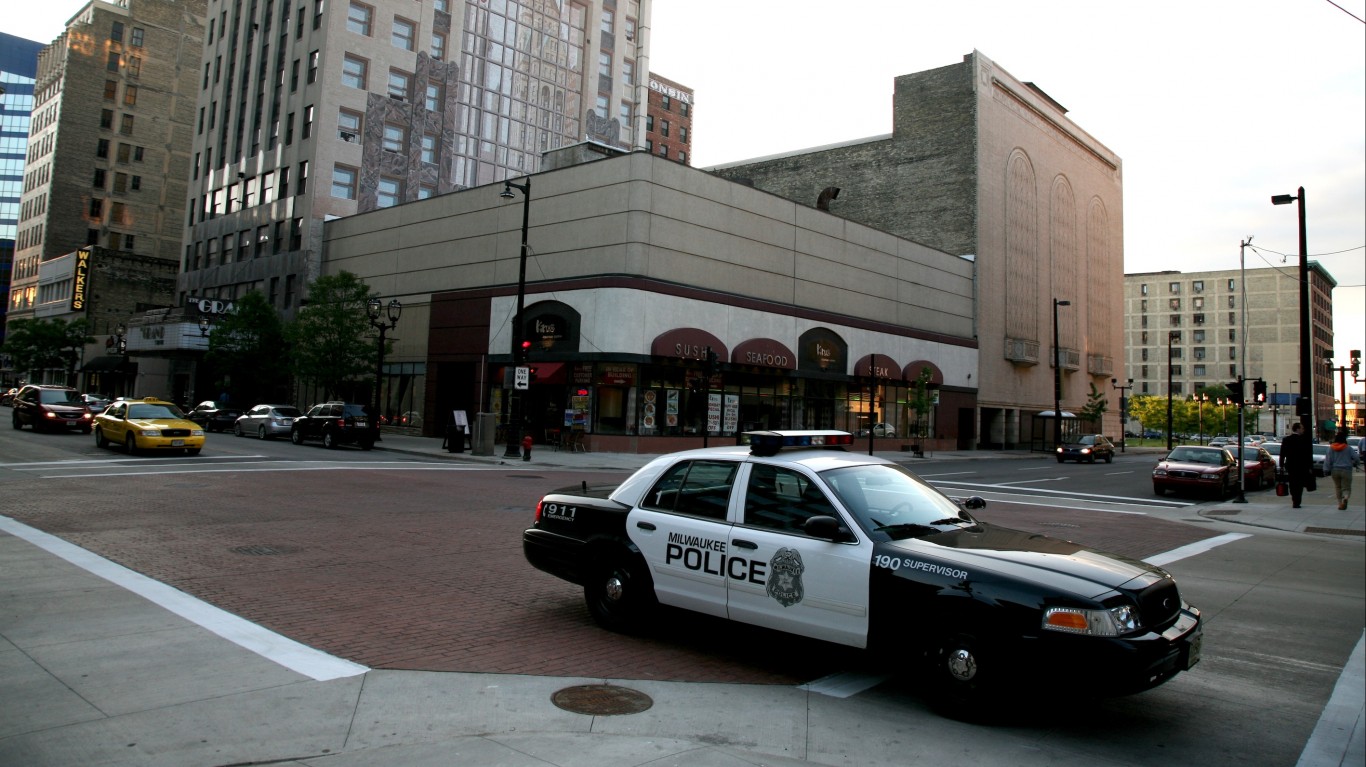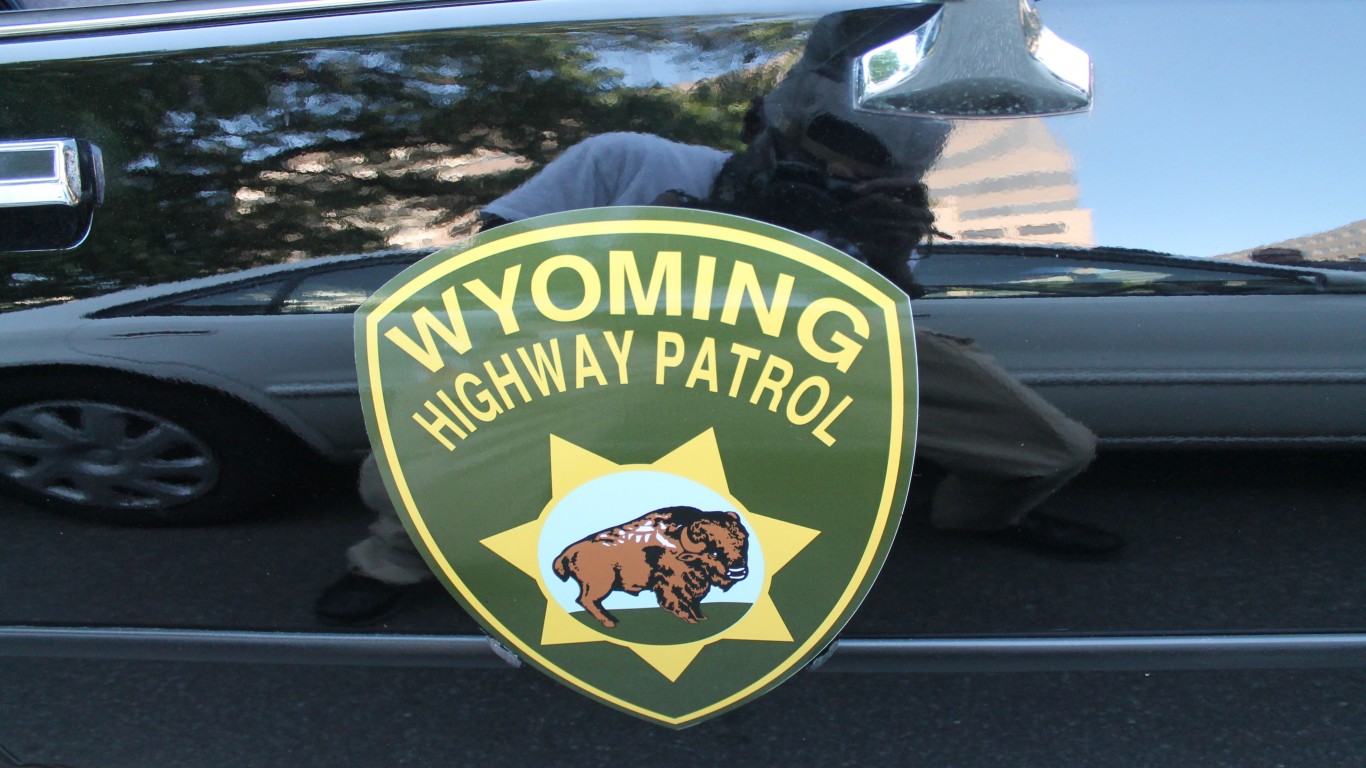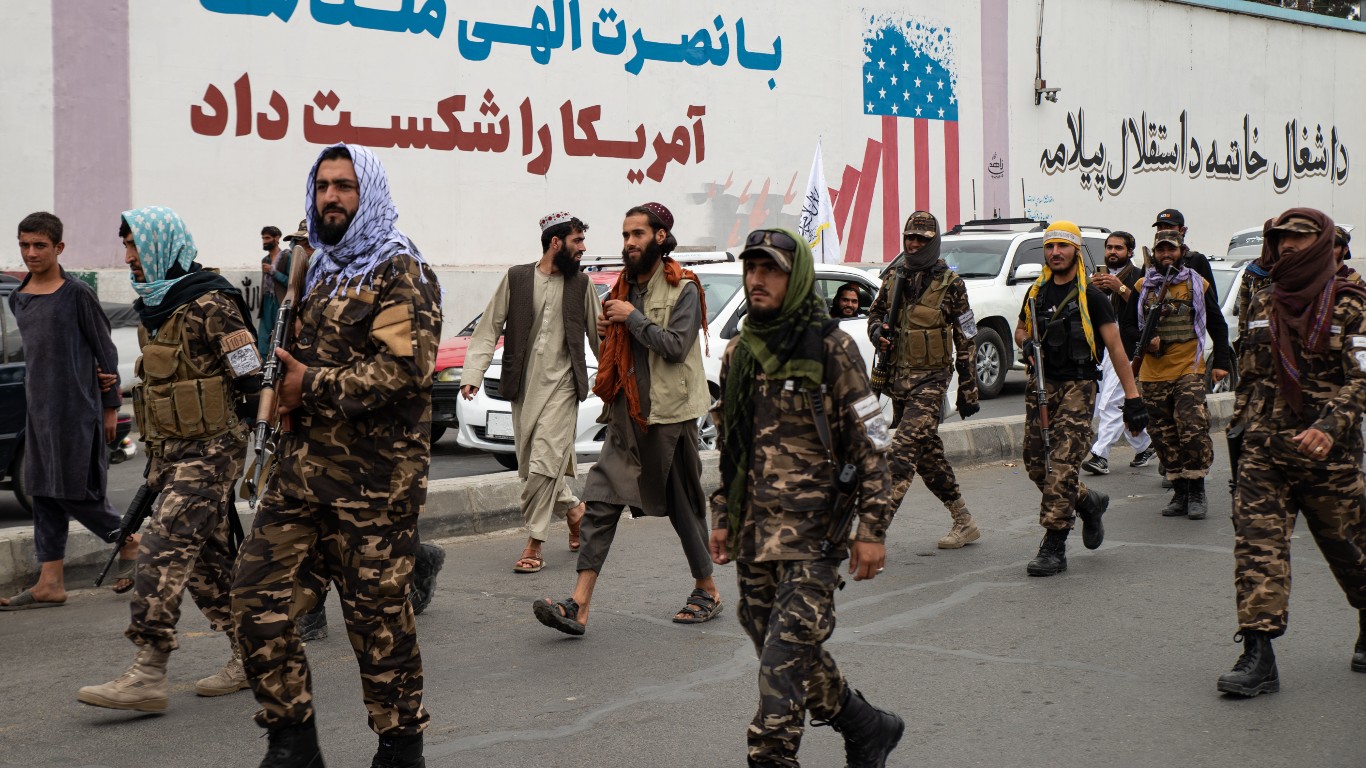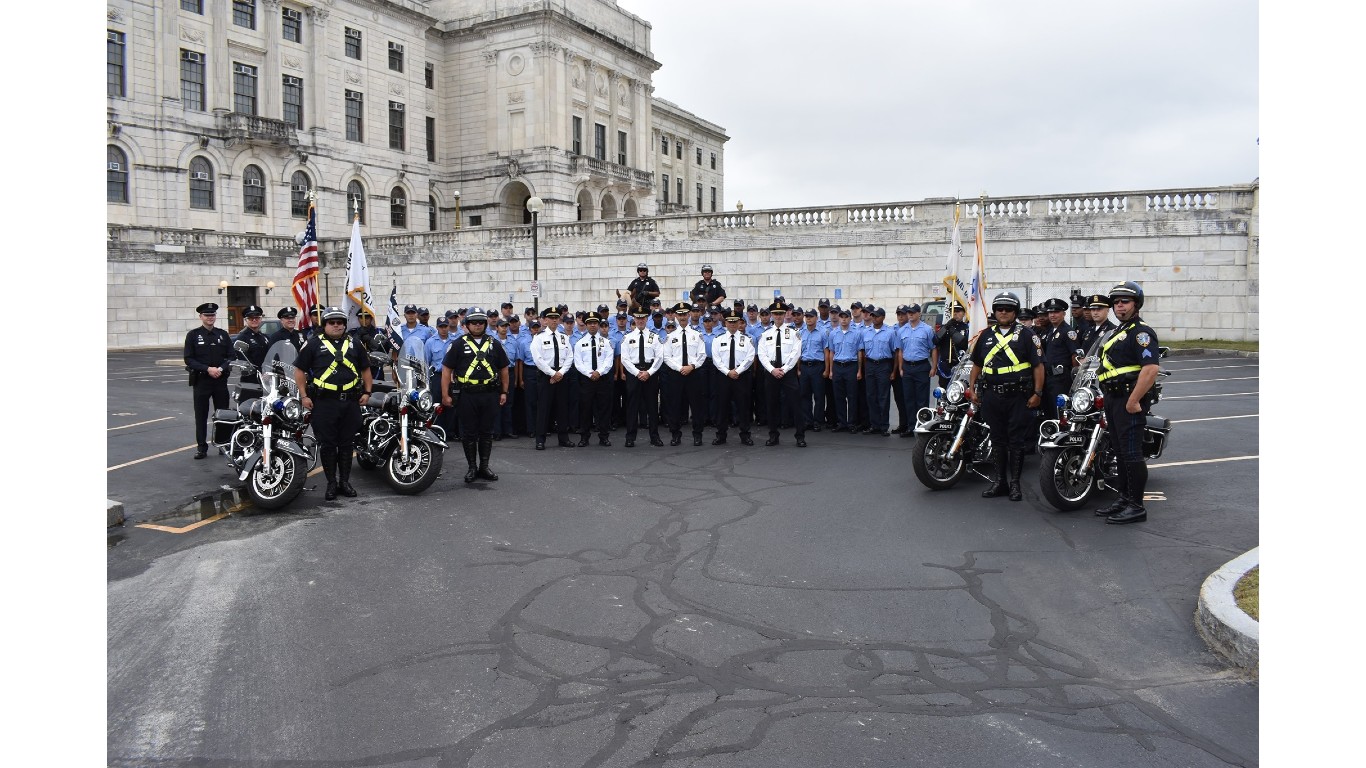
An estimated 665,380 police and sheriff’s patrol officers are employed in the United States, according to May 2021 data. The vast majority of these officers work for local governments, with only about 10% working for state governments, and only a fraction working for universities, hospitals, schools, and other entities.
On average, there are about 2.4 police officers per 1,000 people and 3.4 civilian law enforcement personnel per 1,000 people. Considering the differences across states and urban population centers, police departments vary in size but often fall somewhere near the national average.
States like New York and Utah are vastly different by many measures and demographics, and their police departments reflect this. Within each state, too, population centers vary in size and require matching police departments. A small rural community does not need as large a police department as a large metropolitan area. And most states have at least one if not several large urban centers. (These are the most dangerous states to be a police officer.)
To find the largest police department in every state, 24/7 Wall St. referenced law enforcement employment data from the FBI’s 2021 Uniform Crime Reporting Program for 2021. We ranked each state in terms of its total of officers and civilians employed by a department. We excluded law enforcement agencies with greater jurisdictions than cities or counties, such as State Troopers and Highway Patrol.
It is important to note that this list is reflective of the departments that reported this data to the FBI. Several large cities do not report this data. In cases of the 50 largest cities in the United States that did not report to the FBI, we reviewed city budgets and other documents to best identify comparable city department sizes. Those cities include Philadelphia, Chicago, Columbus, and Indianapolis. For these cities we did not include police personnel per 1,000 population. (These are America’s most heavily policed cities.)
It is not surprising to find New York City and Los Angeles topping the list in New York and California, respectively. The two are the most populous and second-most populous metropolitan areas in the U.S. And while Ada, Idaho, and Polk, Iowa,may not be readily familiar, they respectively encompass Boise, Idaho’s largest city, and Des Moines, Iowa’s largest city.
Still, although these are the largest police departments in their respective states, the largest police department in Vermont is Burlington, which employs 99 police and civilians. Compare that to New York City’s police department employing over 50,000 personnel.
Here is a look at the largest police department in each state:
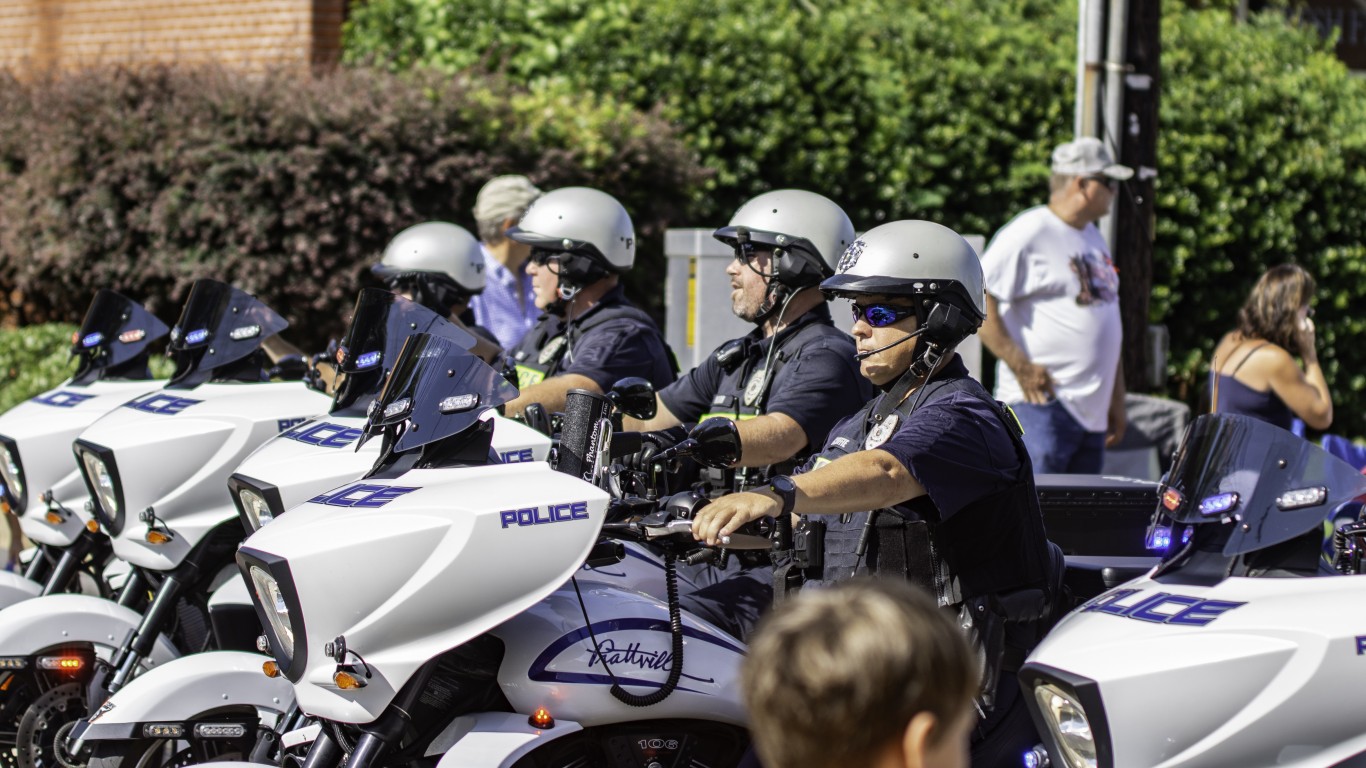
Alabama: Birmingham
> Total police personnel (2021): 951
> Police personnel per 1,000 population (2021): 4.6
> Total officers (2021): 756
> Total civilians (2021): 195
[in-text-ad]
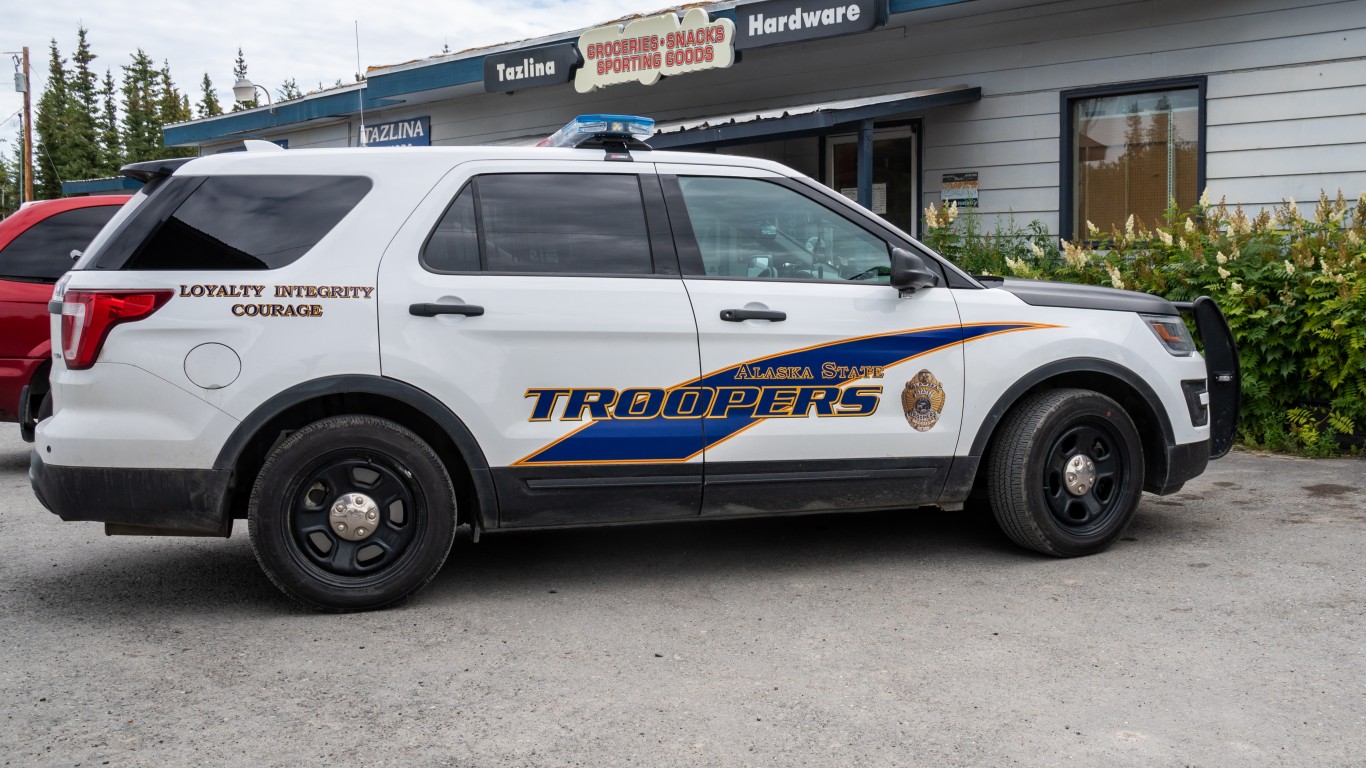
Alaska: Anchorage
> Total police personnel (2021): 574
> Police personnel per 1,000 population (2021): 2.0
> Total officers (2021): 413
> Total civilians (2021): 161
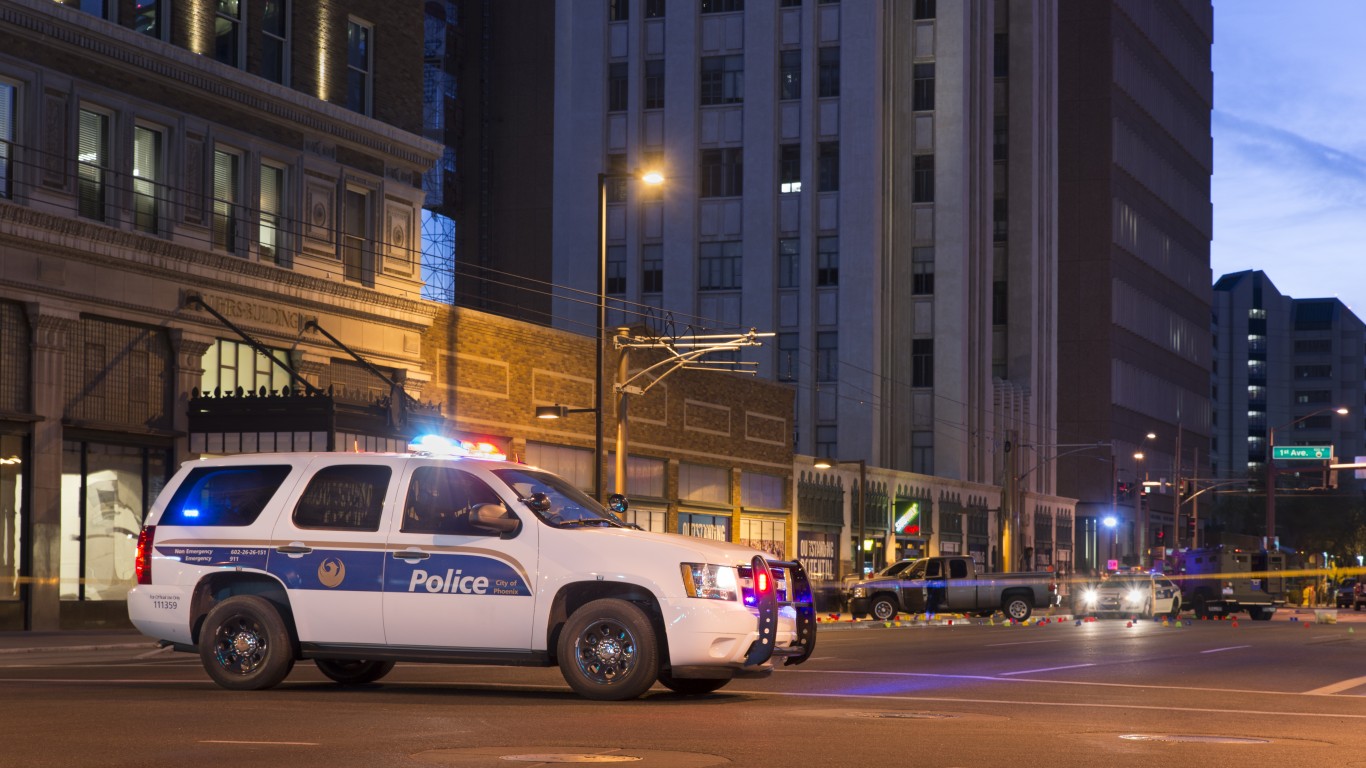
Arizona: Phoenix
> Total police personnel (2021): 3,772
> Police personnel per 1,000 population (2021): 2.3
> Total officers (2021): 2795
> Total civilians (2021): 977
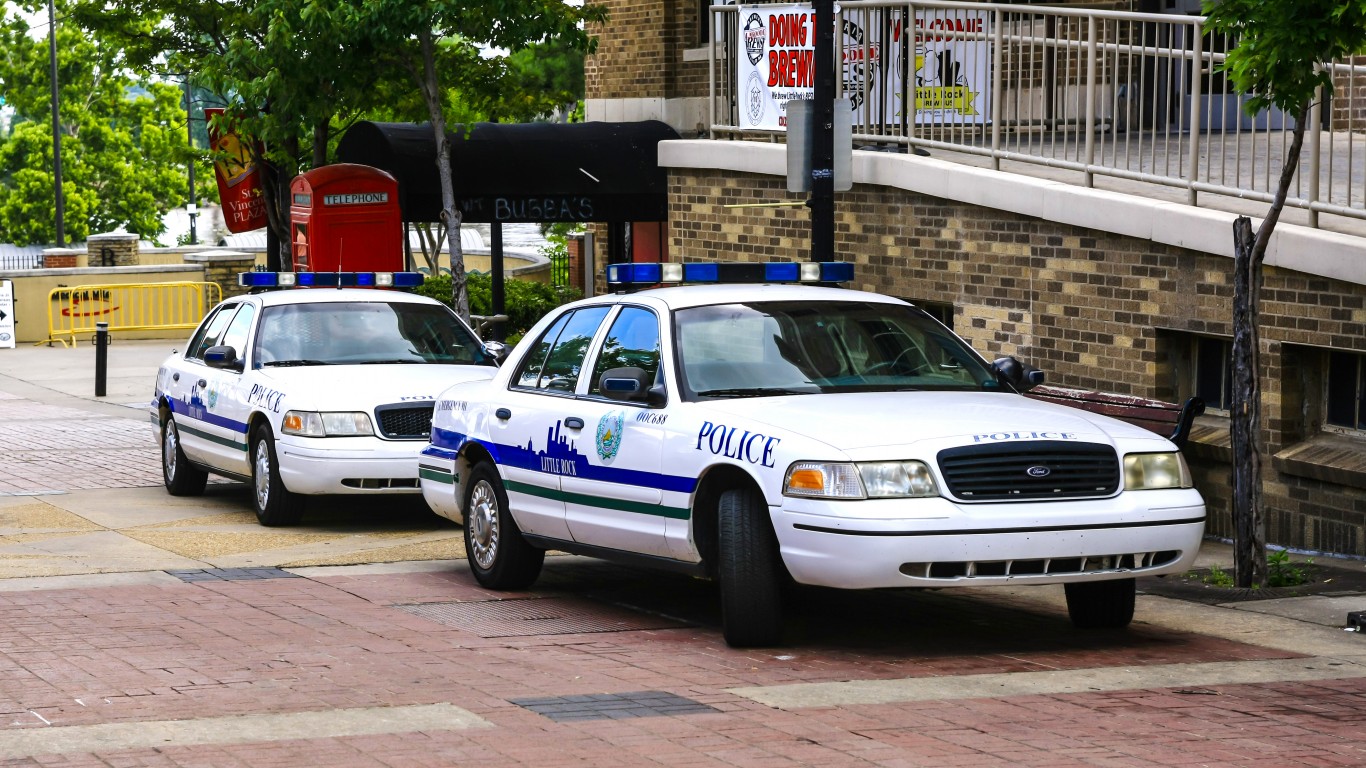
Arkansas: Little Rock
> Total police personnel (2021): 659
> Police personnel per 1,000 population (2021): 3.3
> Total officers (2021): 534
> Total civilians (2021): 125
[in-text-ad-2]
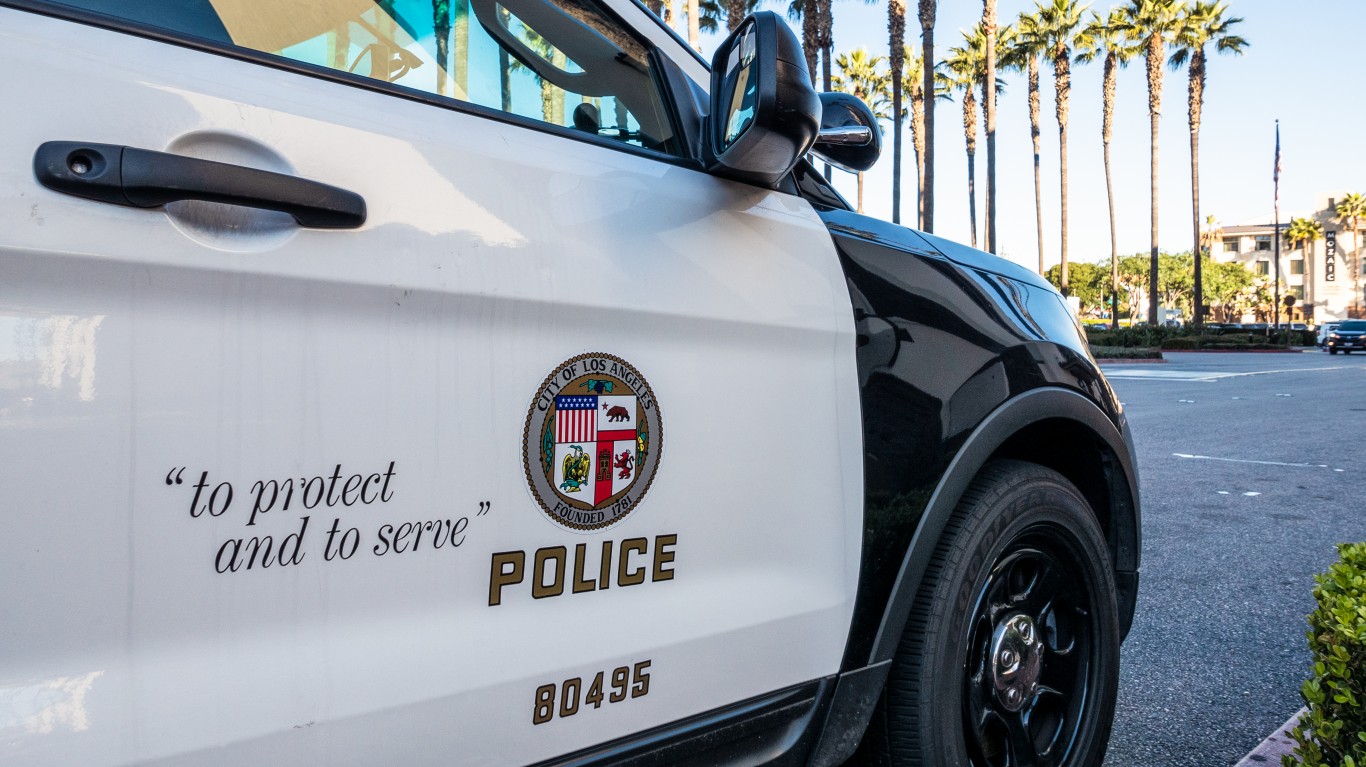
California: Los Angeles
> Total police personnel (2021): 15,286
> Police personnel per 1,000 population (2021): 16.6
> Total officers (2021): 9522
> Total civilians (2021): 5,764
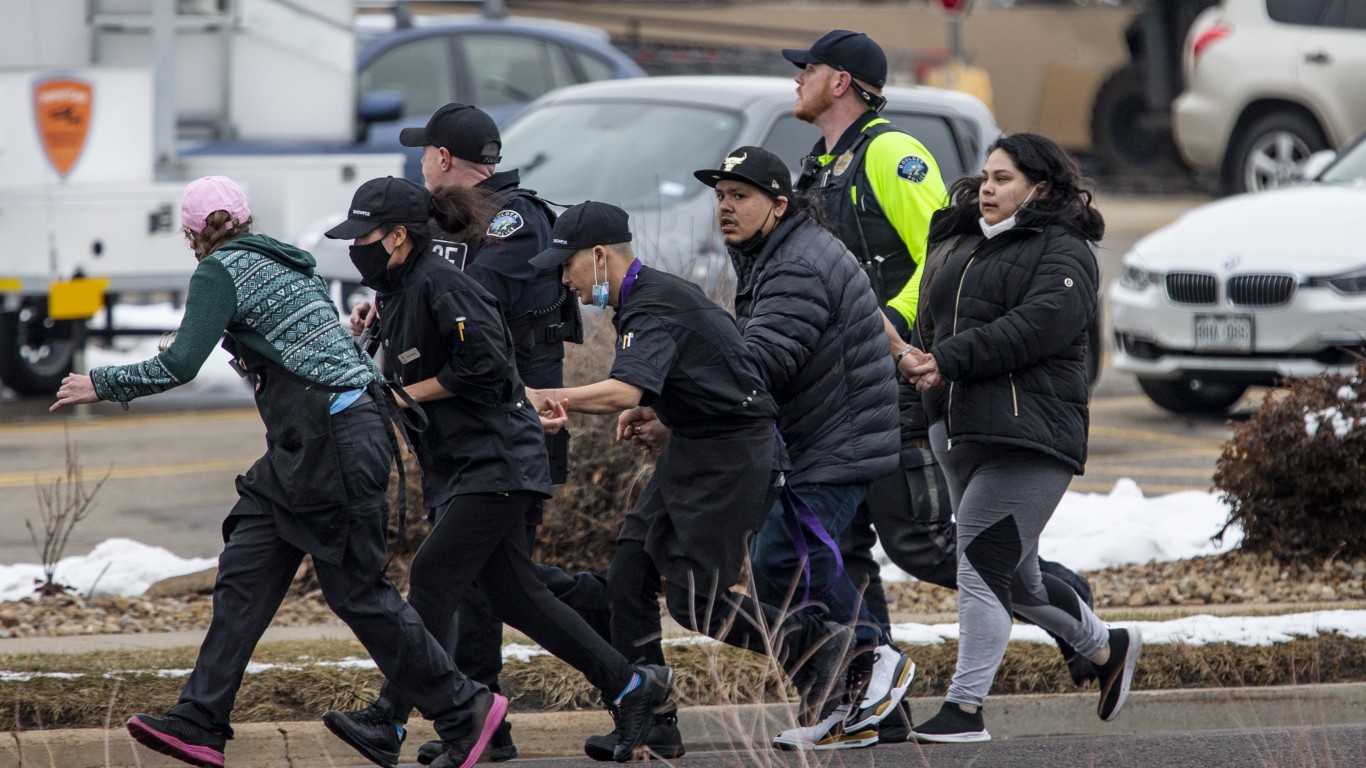
Colorado: Denver
> Total police personnel (2021): 1,784
> Police personnel per 1,000 population (2021): 2.4
> Total officers (2021): 1447
> Total civilians (2021): 337
[in-text-ad]
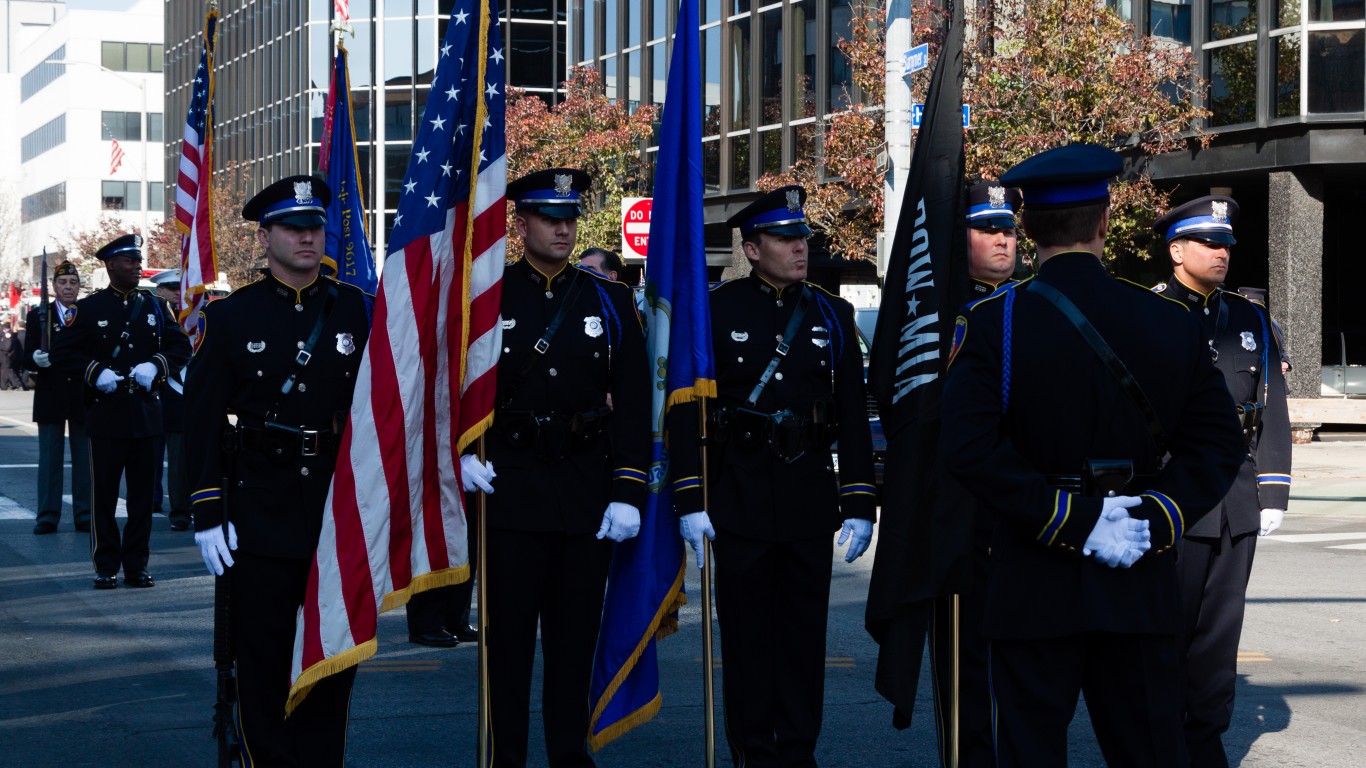
Connecticut: Hartford
> Total police personnel (2021): 419
> Police personnel per 1,000 population (2021): 3.5
> Total officers (2021): 395
> Total civilians (2021): 24
Delaware: New Castle County Police Department
> Total police personnel (2021): 430
> Police personnel per 1,000 population (2021): 1.0
> Total officers (2021): 376
> Total civilians (2021): 54
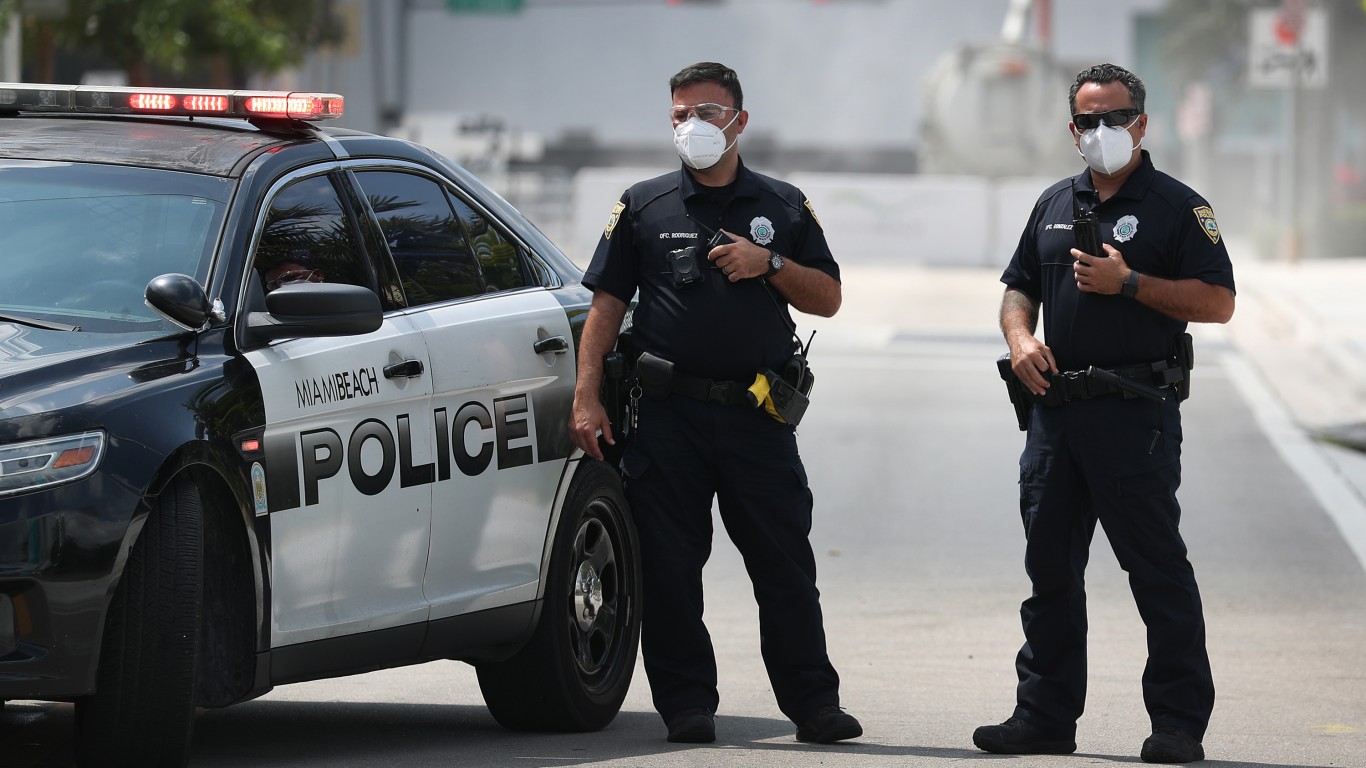
Florida: Miami-Dade
> Total police personnel (2021): 4,154
> Police personnel per 1,000 population (2021): 3.6
> Total officers (2021): 3020
> Total civilians (2021): 1,134
[in-text-ad-2]
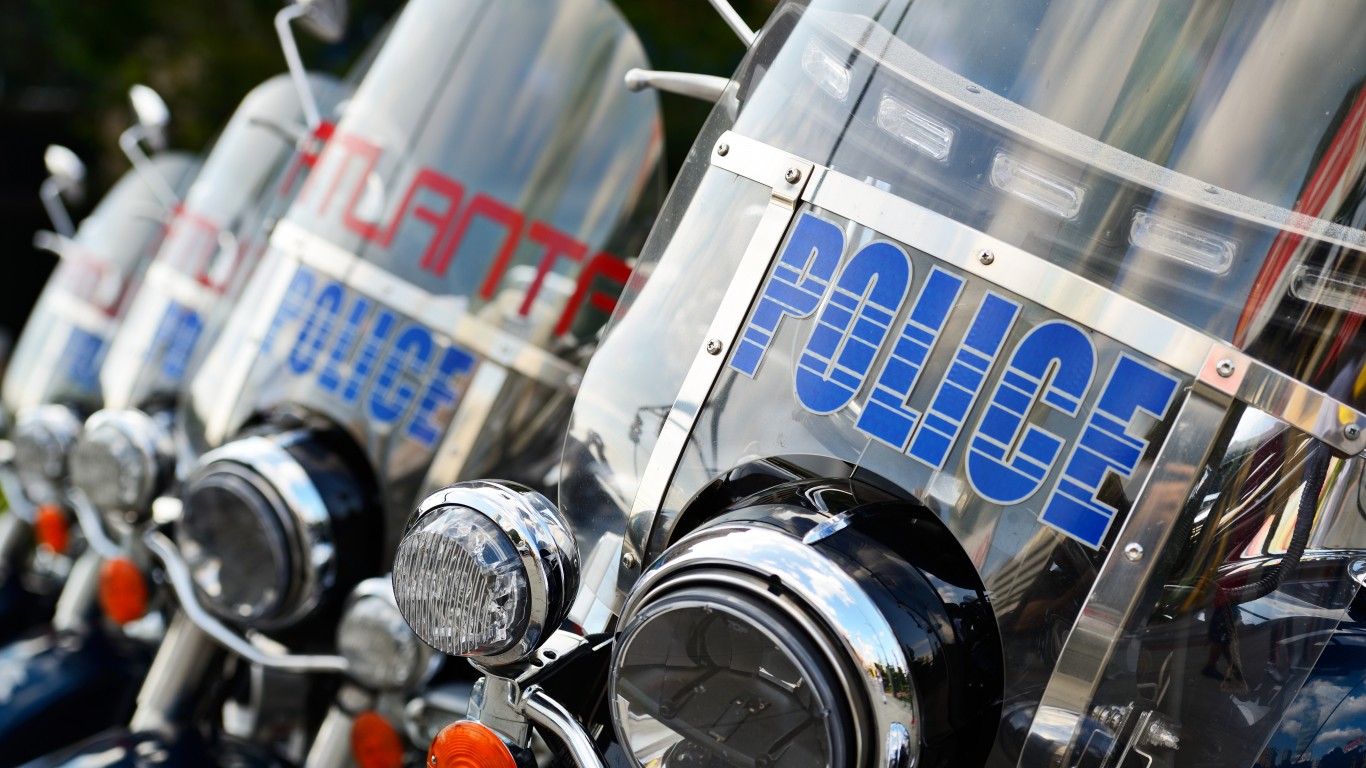
Georgia: Atlanta
> Total police personnel (2021): 2,095
> Police personnel per 1,000 population (2021): 4.0
> Total officers (2021): 1641
> Total civilians (2021): 454
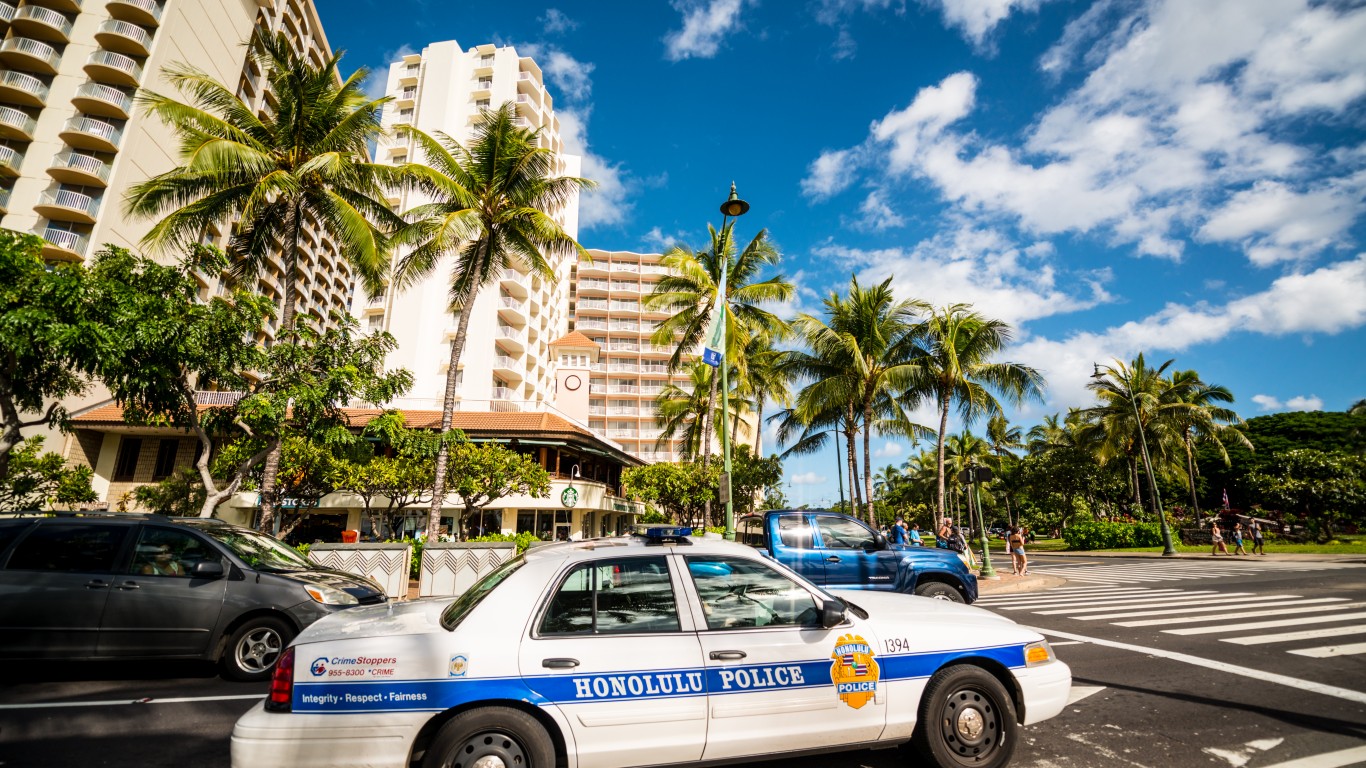
Hawaii: Honolulu
> Total police personnel (2021): 2,437
> Police personnel per 1,000 population (2021): 2.5
> Total officers (2021): 1942
> Total civilians (2021): 495
[in-text-ad]
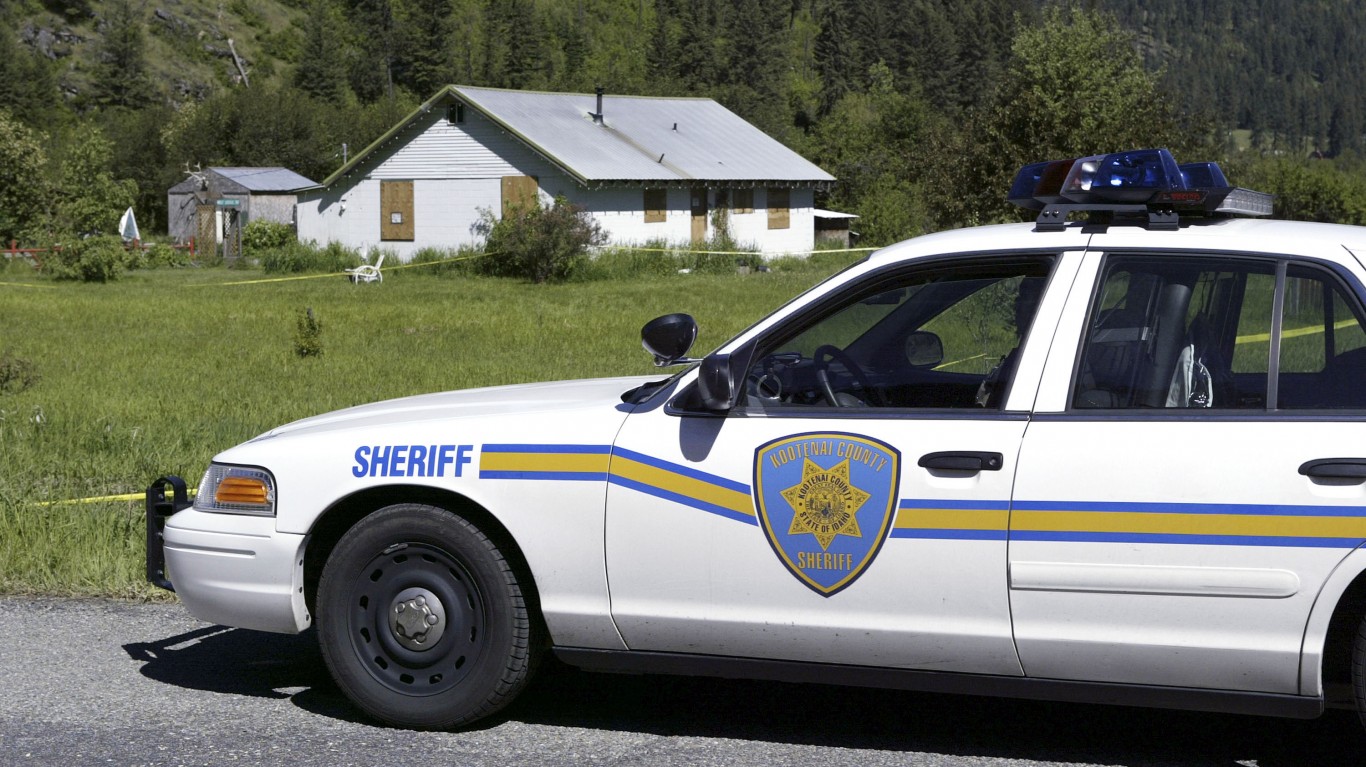
Idaho: Ada
> Total police personnel (2021): 551
> Police personnel per 1,000 population (2021): 3.7
> Total officers (2021): 190
> Total civilians (2021): 361
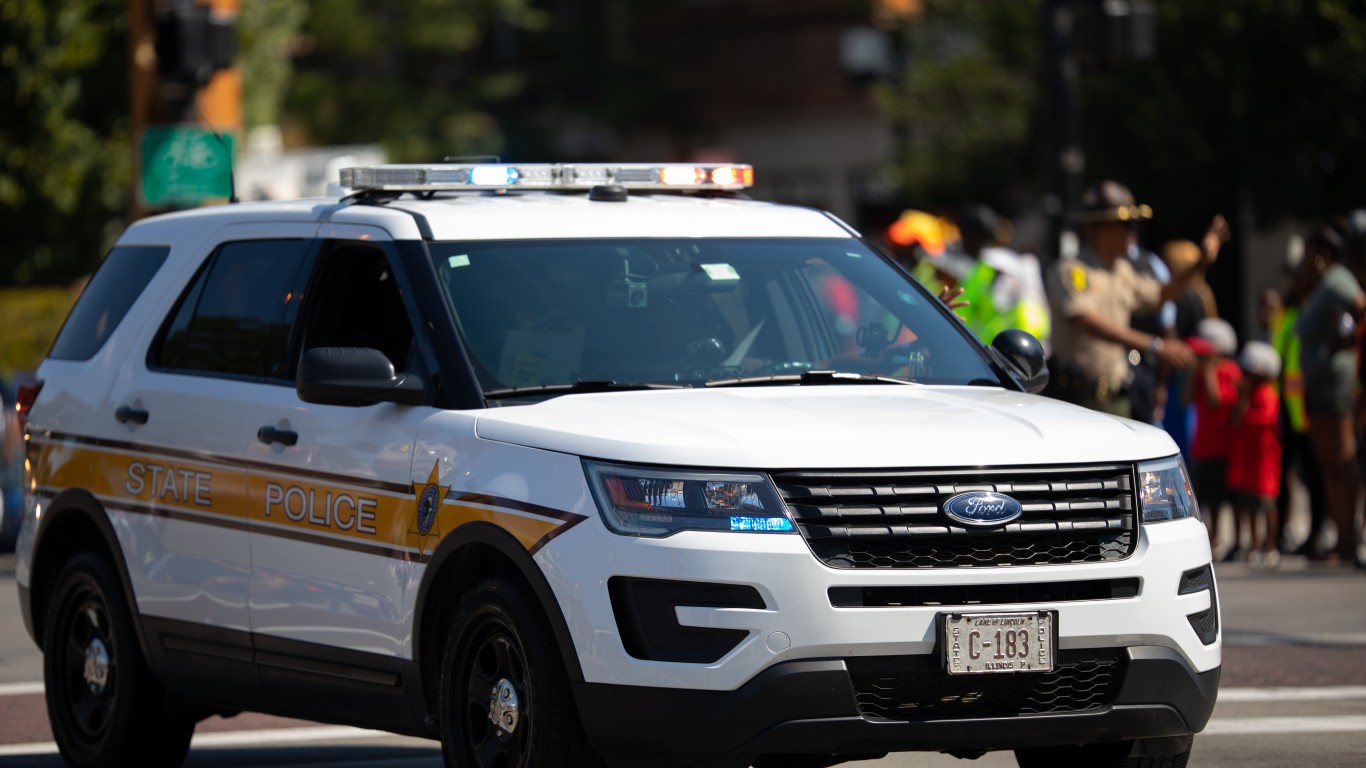
Illinois: Chicago
> Total police personnel (2021): 14,058
> Police personnel per 1,000 population (2021): N/A
> Total officers (2021): 13108
> Total civilians (2021): 950
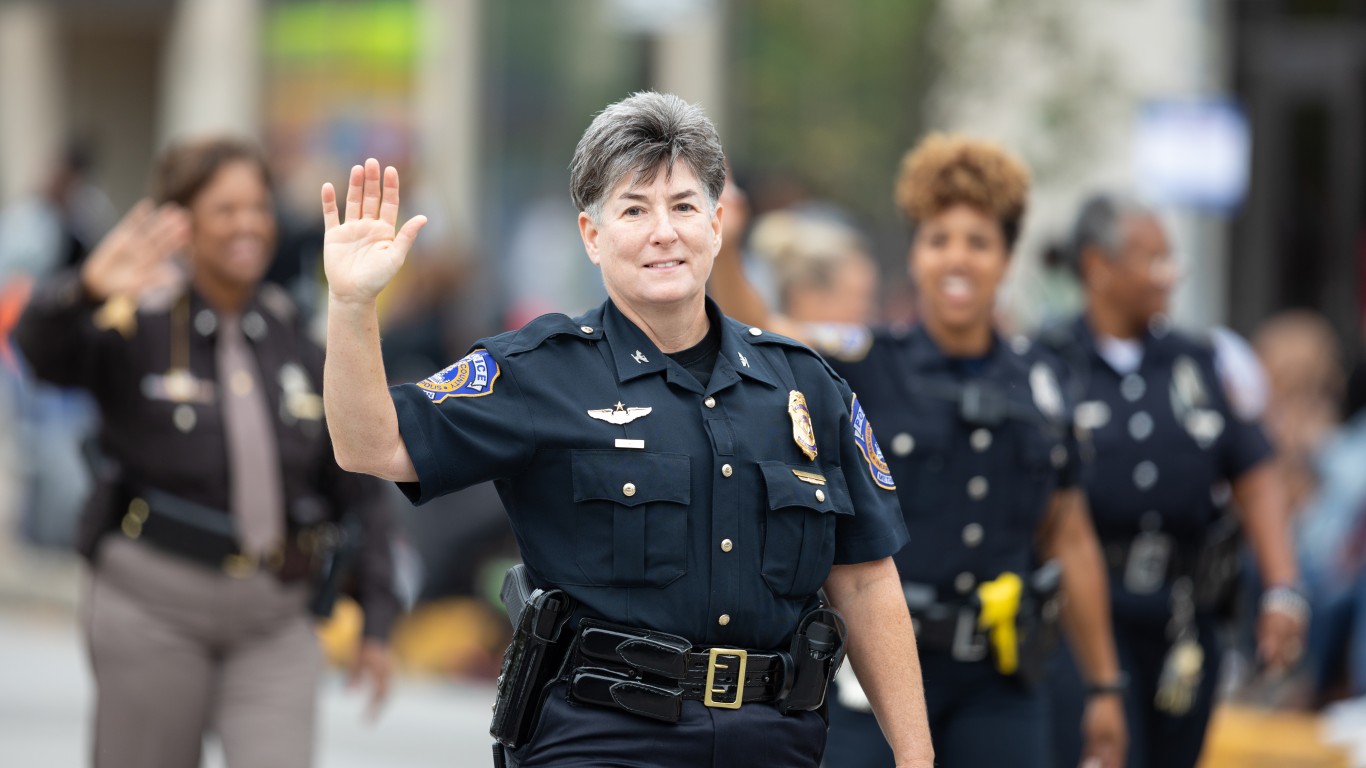
Indiana: Indianapolis
> Total police personnel (2021): 1,950
> Police personnel per 1,000 population (2021): N/A
> Total officers (2021): 1700
> Total civilians (2021): 250
[in-text-ad-2]
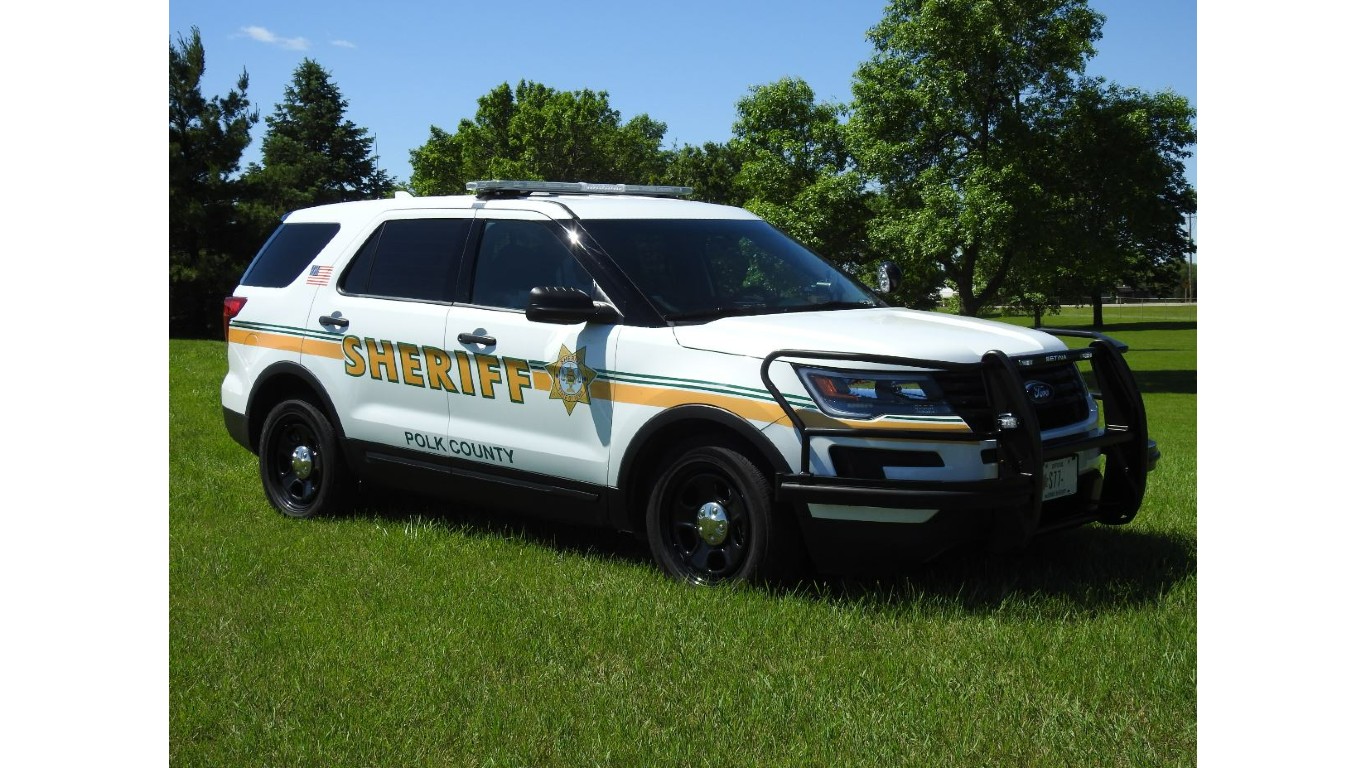
Iowa: Polk
> Total police personnel (2021): 500
> Police personnel per 1,000 population (2021): 8.4
> Total officers (2021): 150
> Total civilians (2021): 350
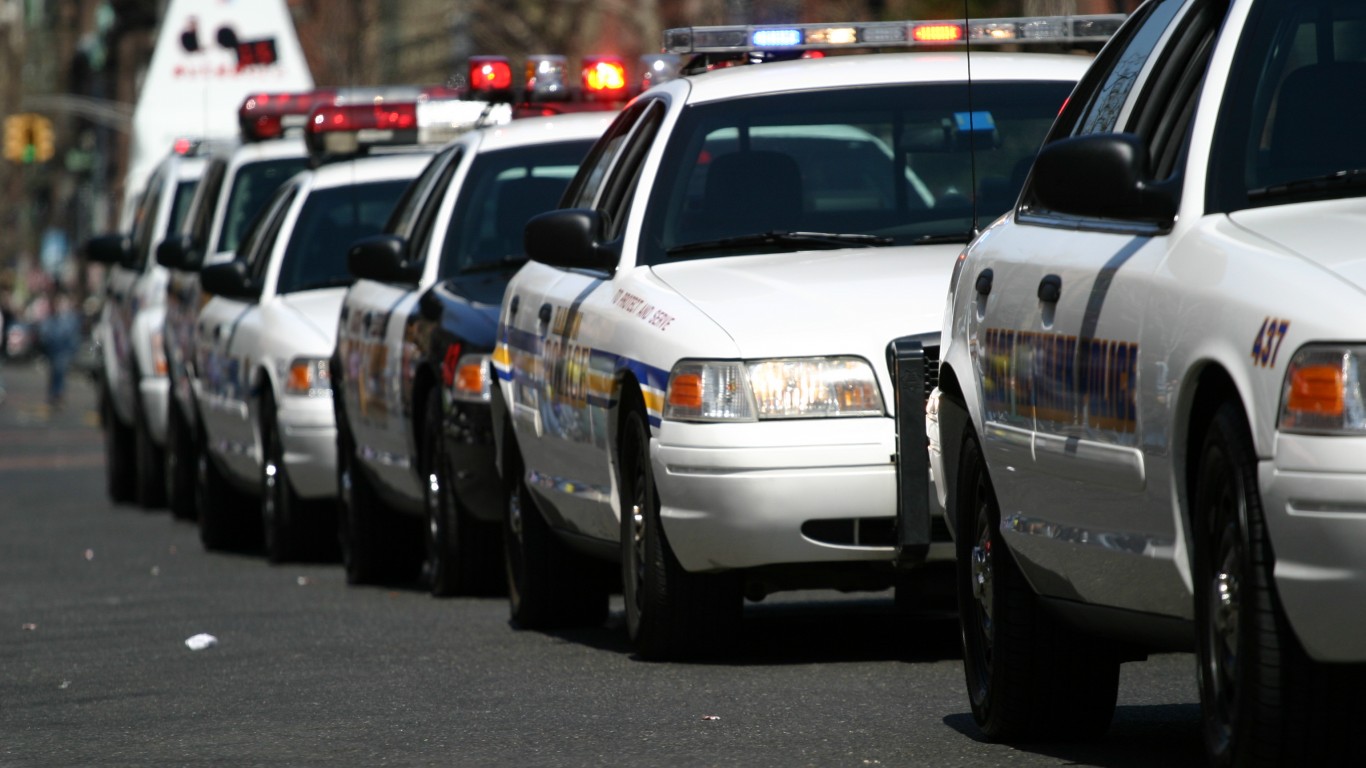
Kansas: Johnson
> Total police personnel (2021): 651
> Police personnel per 1,000 population (2021): 24.4
> Total officers (2021): 484
> Total civilians (2021): 167
[in-text-ad]
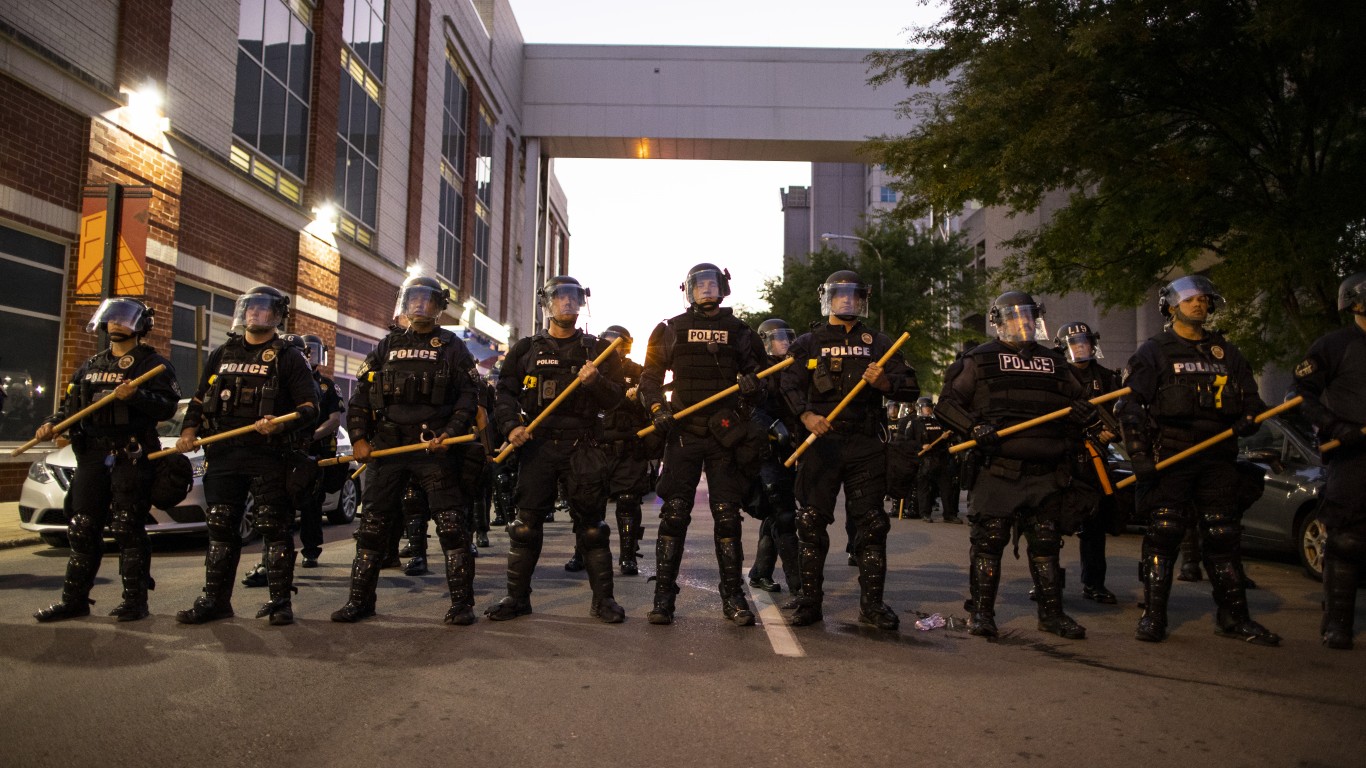
Kentucky: Louisville Metro
> Total police personnel (2021): 1,320
> Police personnel per 1,000 population (2021): 2.0
> Total officers (2021): 1038
> Total civilians (2021): 282
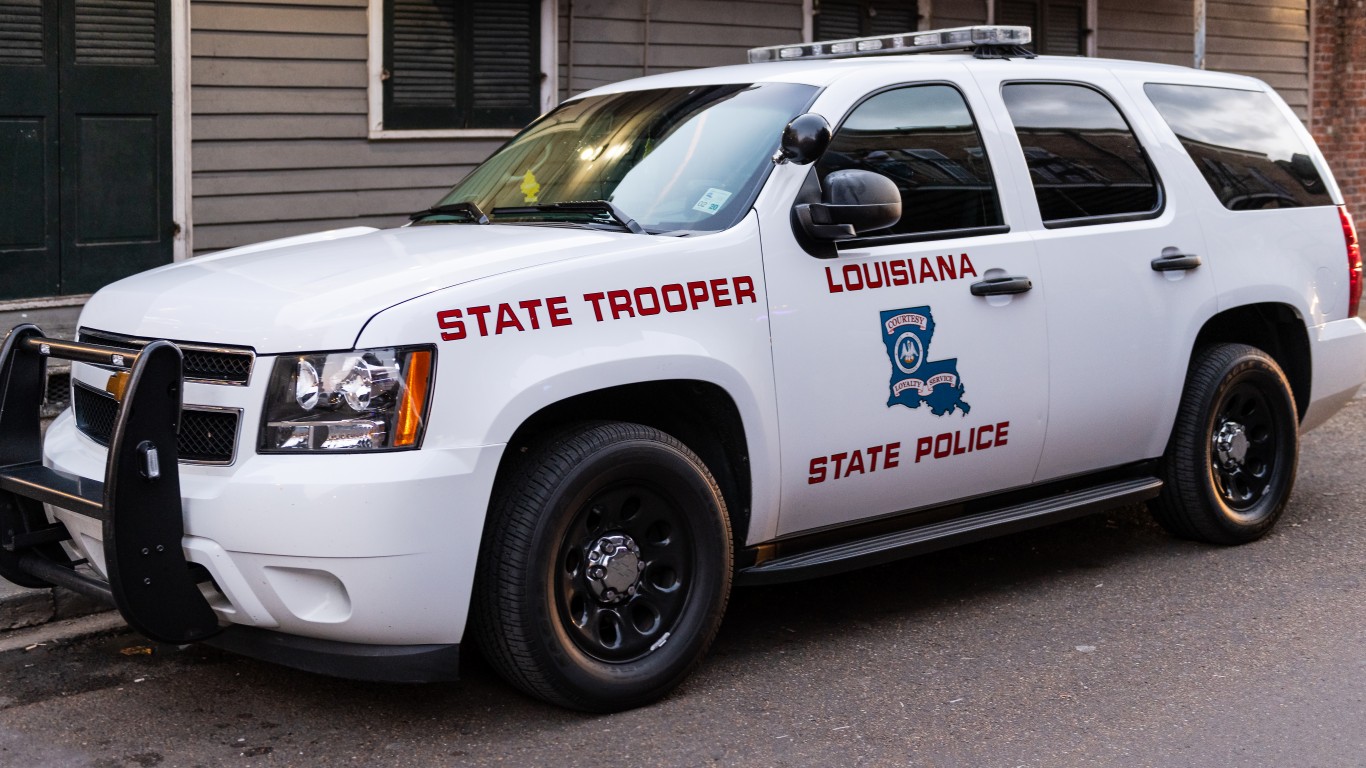
Louisiana: Jefferson
> Total police personnel (2021): 1,273
> Police personnel per 1,000 population (2021): 3.9
> Total officers (2021): 858
> Total civilians (2021): 415

Maine: Portland
> Total police personnel (2021): 203
> Police personnel per 1,000 population (2021): 3.0
> Total officers (2021): 146
> Total civilians (2021): 57
[in-text-ad-2]
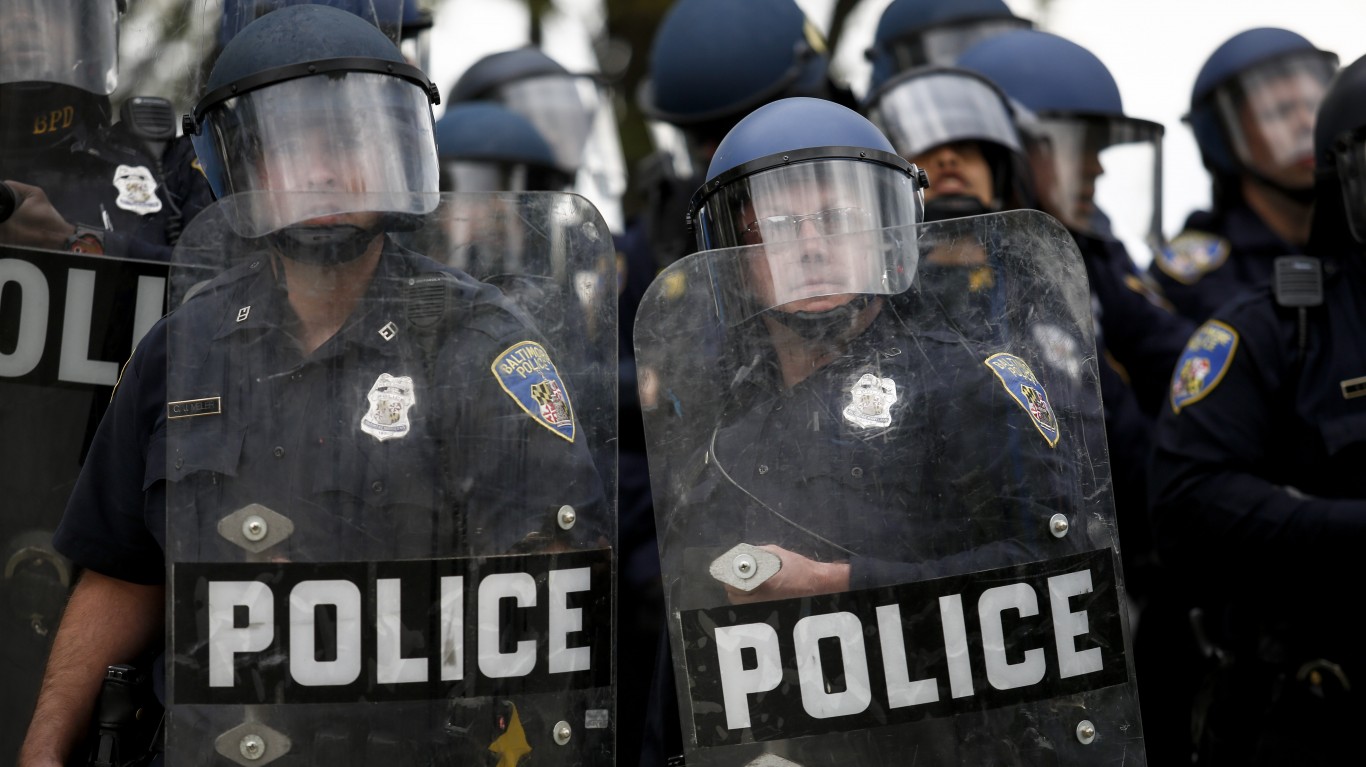
Maryland: Baltimore
> Total police personnel (2021): 2,843
> Police personnel per 1,000 population (2021): 4.8
> Total officers (2021): 2360
> Total civilians (2021): 483
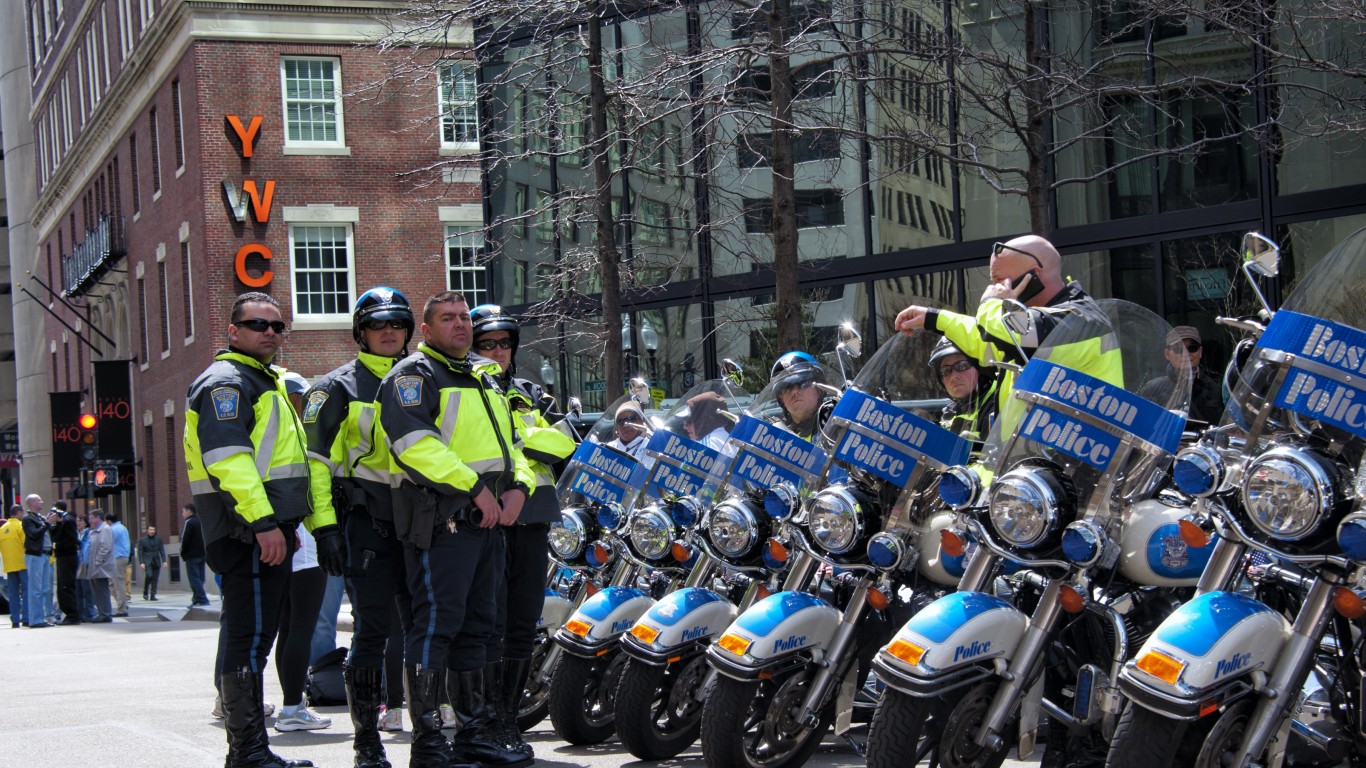
Massachusetts: Boston
> Total police personnel (2021): 2,716
> Police personnel per 1,000 population (2021): 3.9
> Total officers (2021): 2184
> Total civilians (2021): 532
[in-text-ad]

Michigan: Detroit
> Total police personnel (2021): 3,100
> Police personnel per 1,000 population (2021): 4.6
> Total officers (2021): 2475
> Total civilians (2021): 625
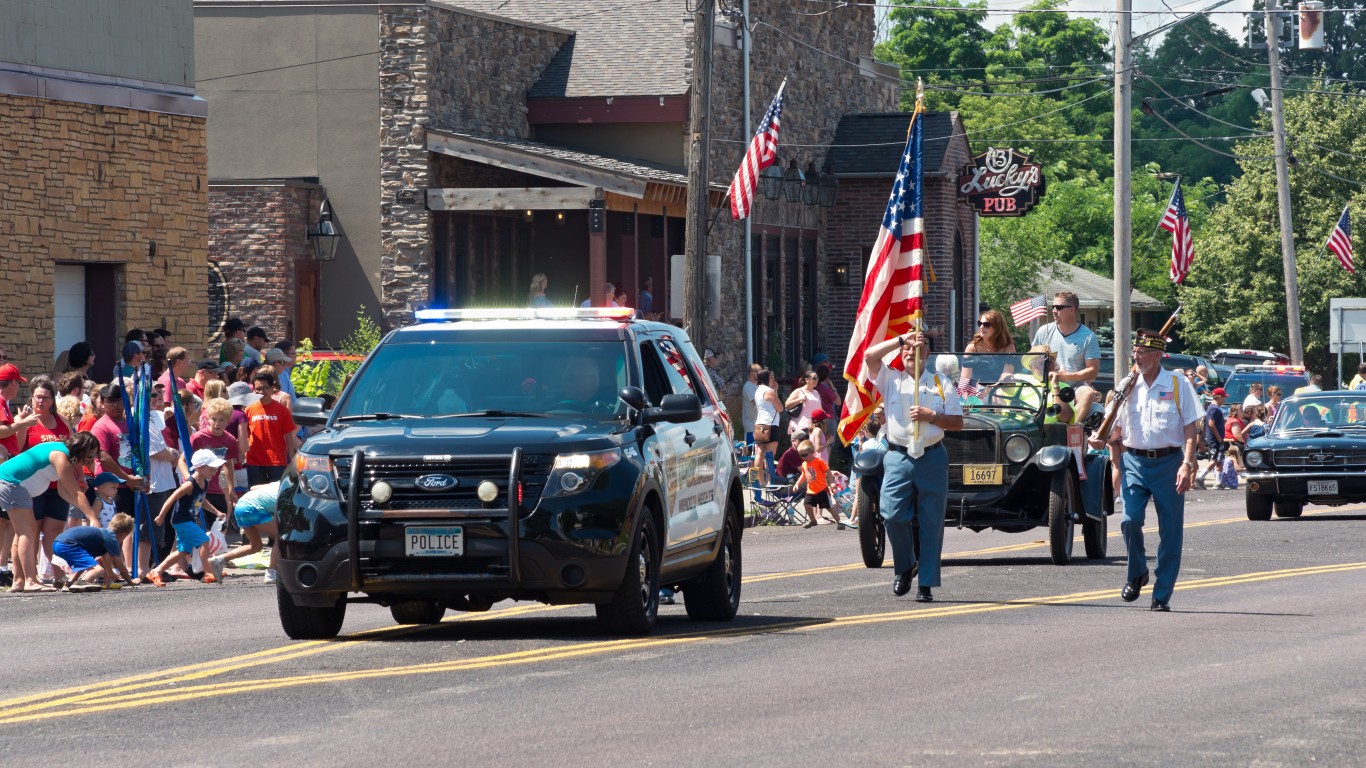
Minnesota: Hennepin
> Total police personnel (2021): 824
> Police personnel per 1,000 population (2021): 94.8
> Total officers (2021): 321
> Total civilians (2021): 503
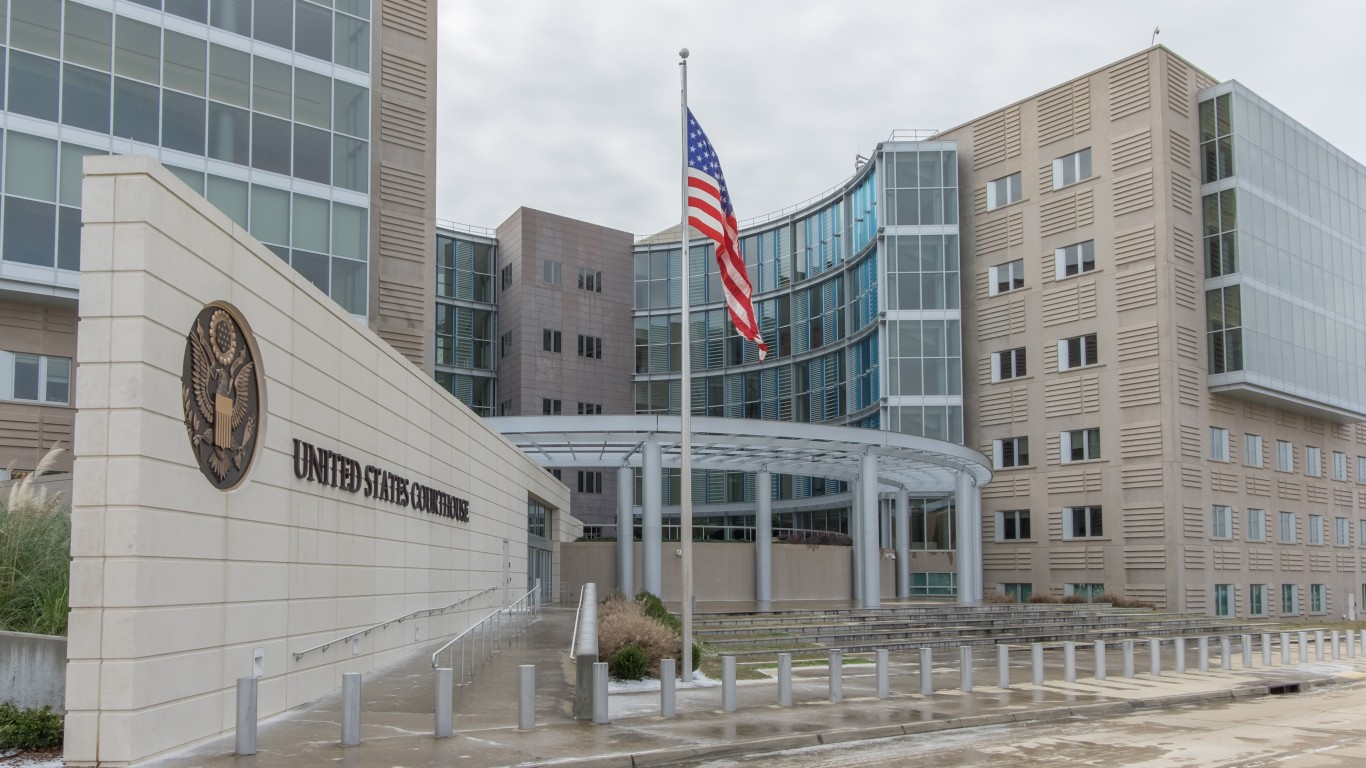
Mississippi: Jackson
> Total police personnel (2021): 416
> Police personnel per 1,000 population (2021): 2.7
> Total officers (2021): 278
> Total civilians (2021): 138
[in-text-ad-2]
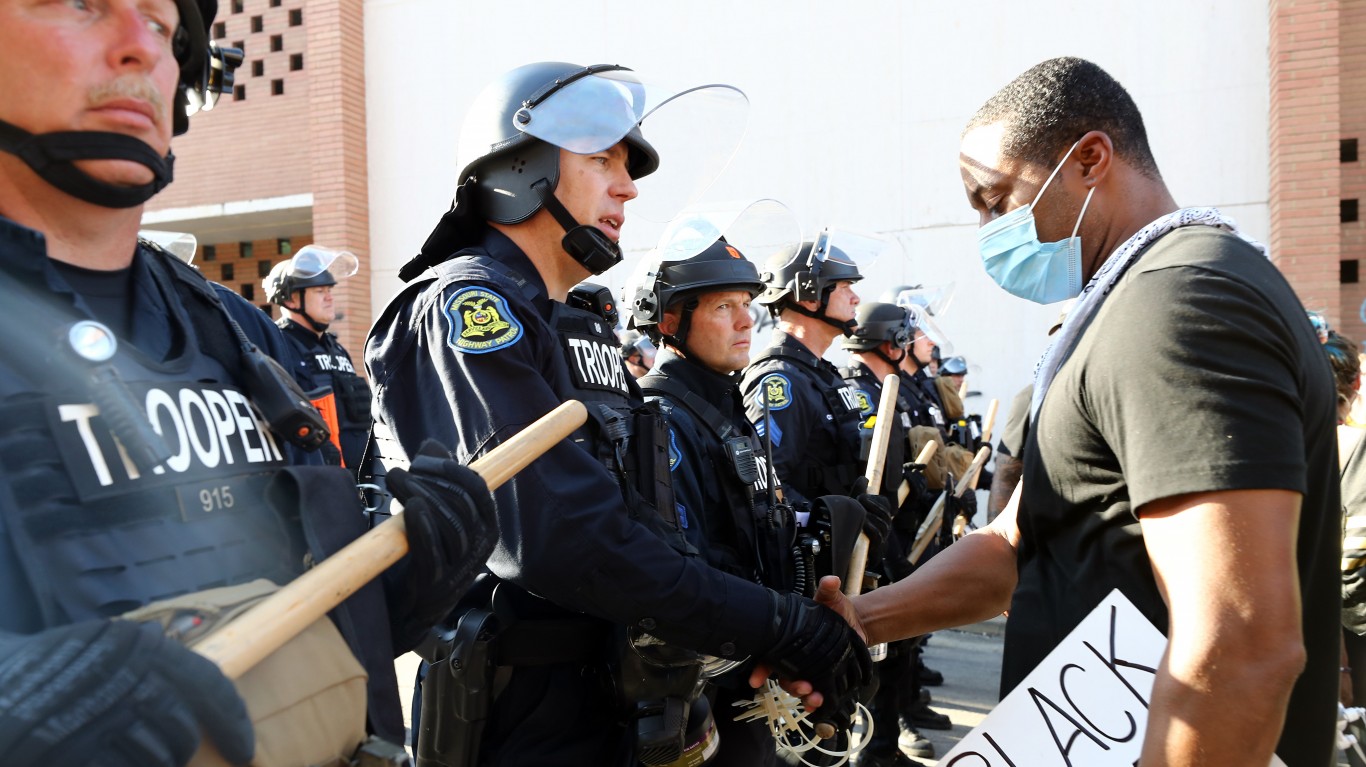
Missouri: Kansas City
> Total police personnel (2021): 1,839
> Police personnel per 1,000 population (2021): 3.7
> Total officers (2021): 1286
> Total civilians (2021): 553

Montana: Yellowstone
> Total police personnel (2021): 187
> Police personnel per 1,000 population (2021): 3.8
> Total officers (2021): 60
> Total civilians (2021): 127
[in-text-ad]
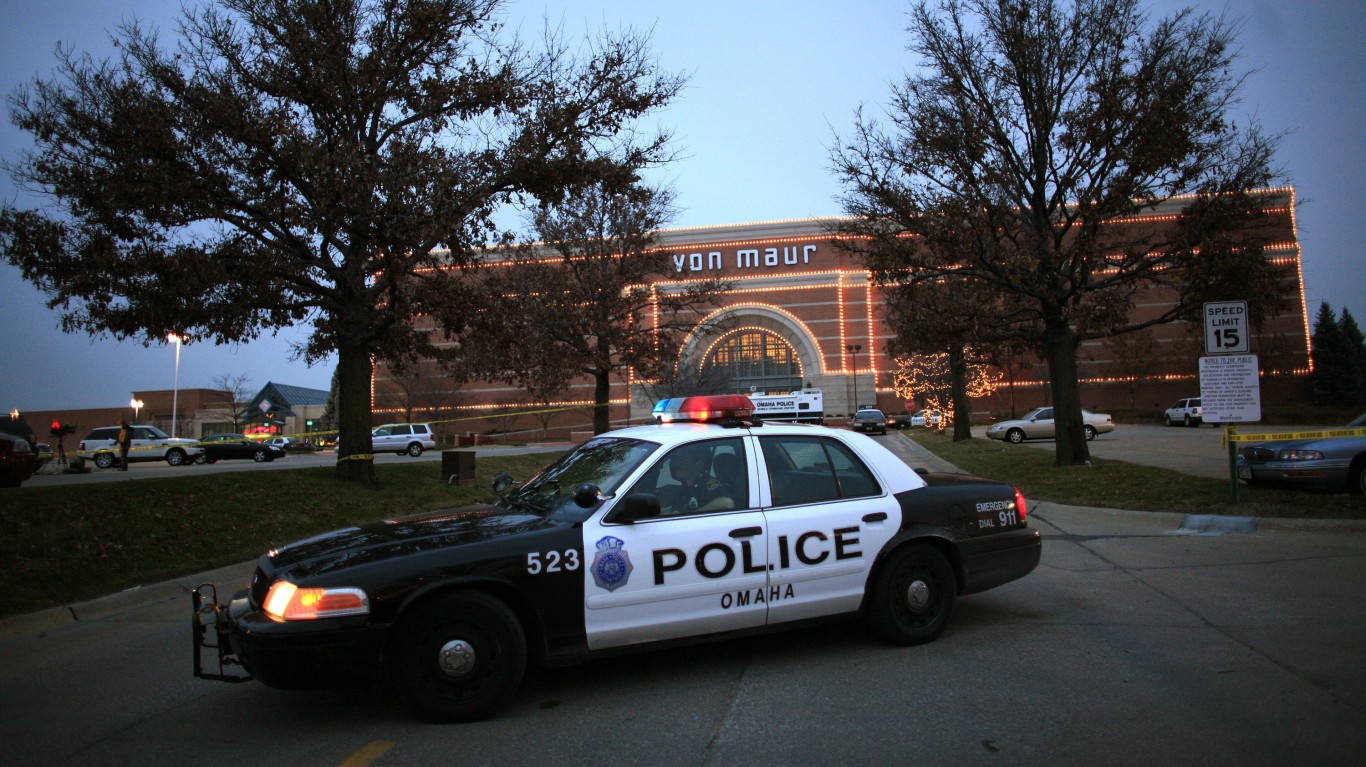
Nebraska: Omaha
> Total police personnel (2021): 1,044
> Police personnel per 1,000 population (2021): 2.2
> Total officers (2021): 895
> Total civilians (2021): 149
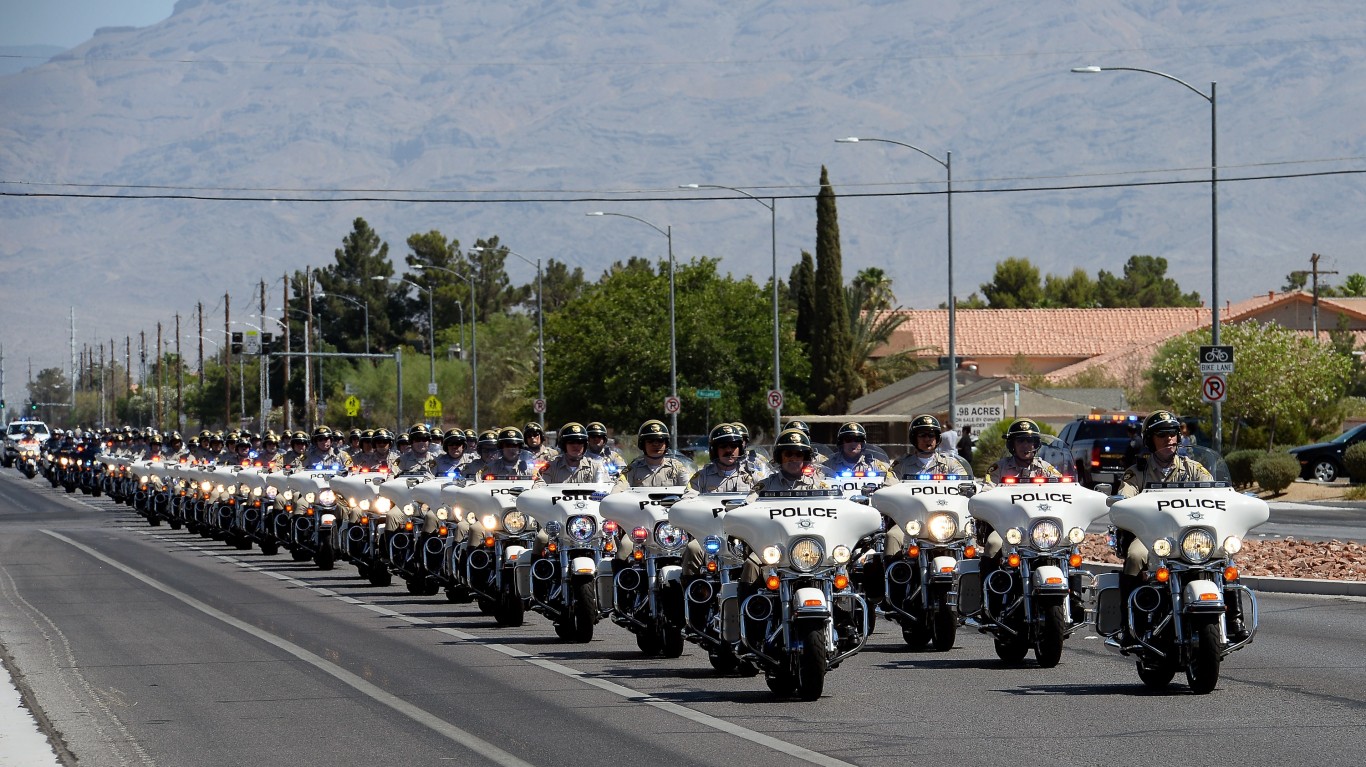
Nevada: Las Vegas Metropolitan Police Department
> Total police personnel (2021): 5,760
> Police personnel per 1,000 population (2021): 3.4
> Total officers (2021): 3994
> Total civilians (2021): 1,766
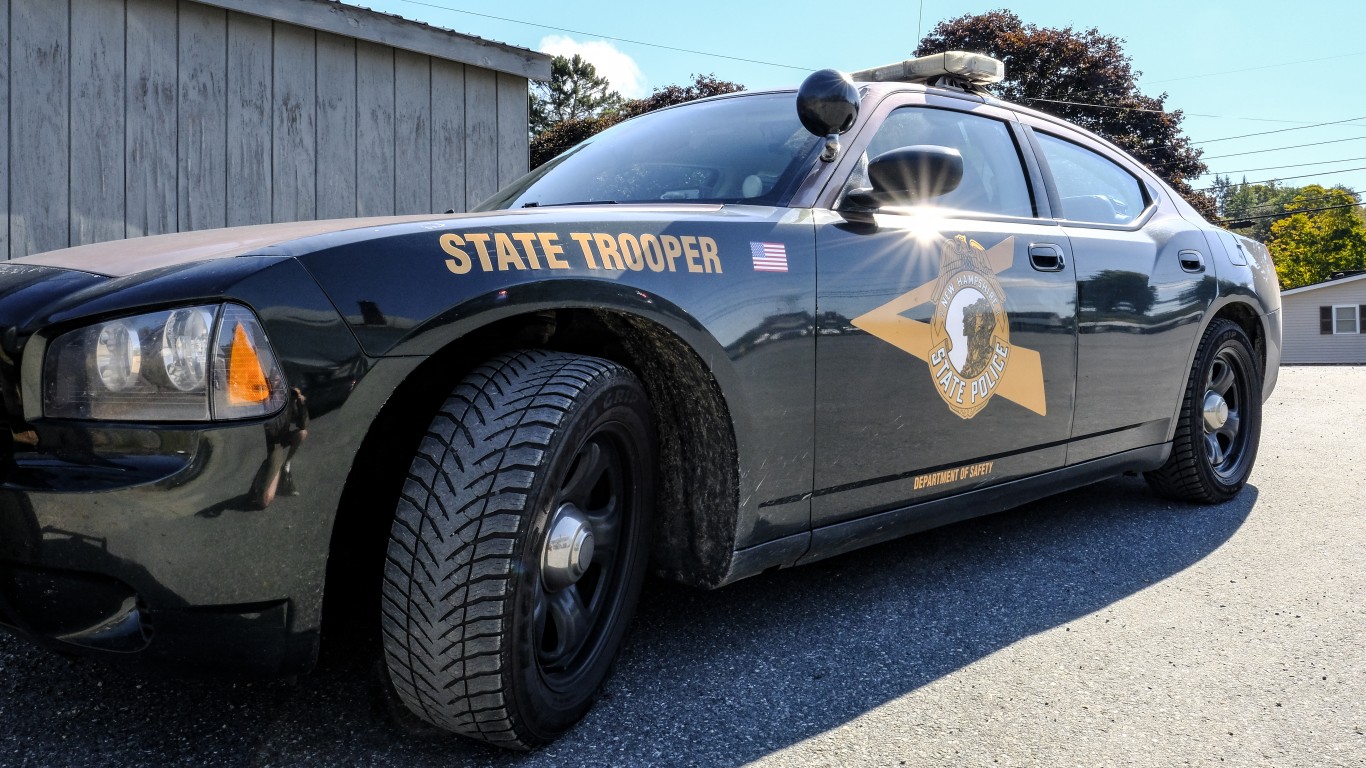
New Hampshire: Manchester
> Total police personnel (2021): 269
> Police personnel per 1,000 population (2021): 2.4
> Total officers (2021): 222
> Total civilians (2021): 47
[in-text-ad-2]
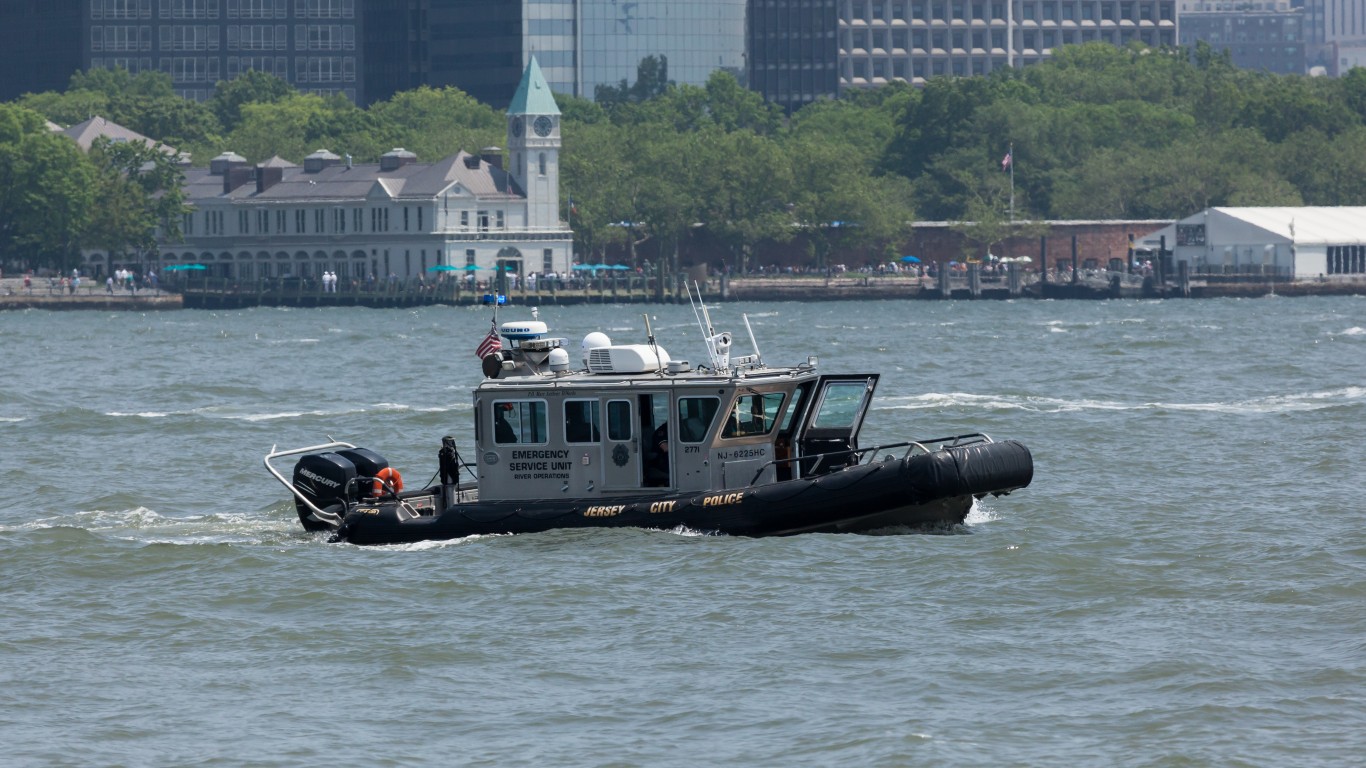
New Jersey: Jersey City
> Total police personnel (2021): 1,444
> Police personnel per 1,000 population (2021): 5.3
> Total officers (2021): 934
> Total civilians (2021): 510
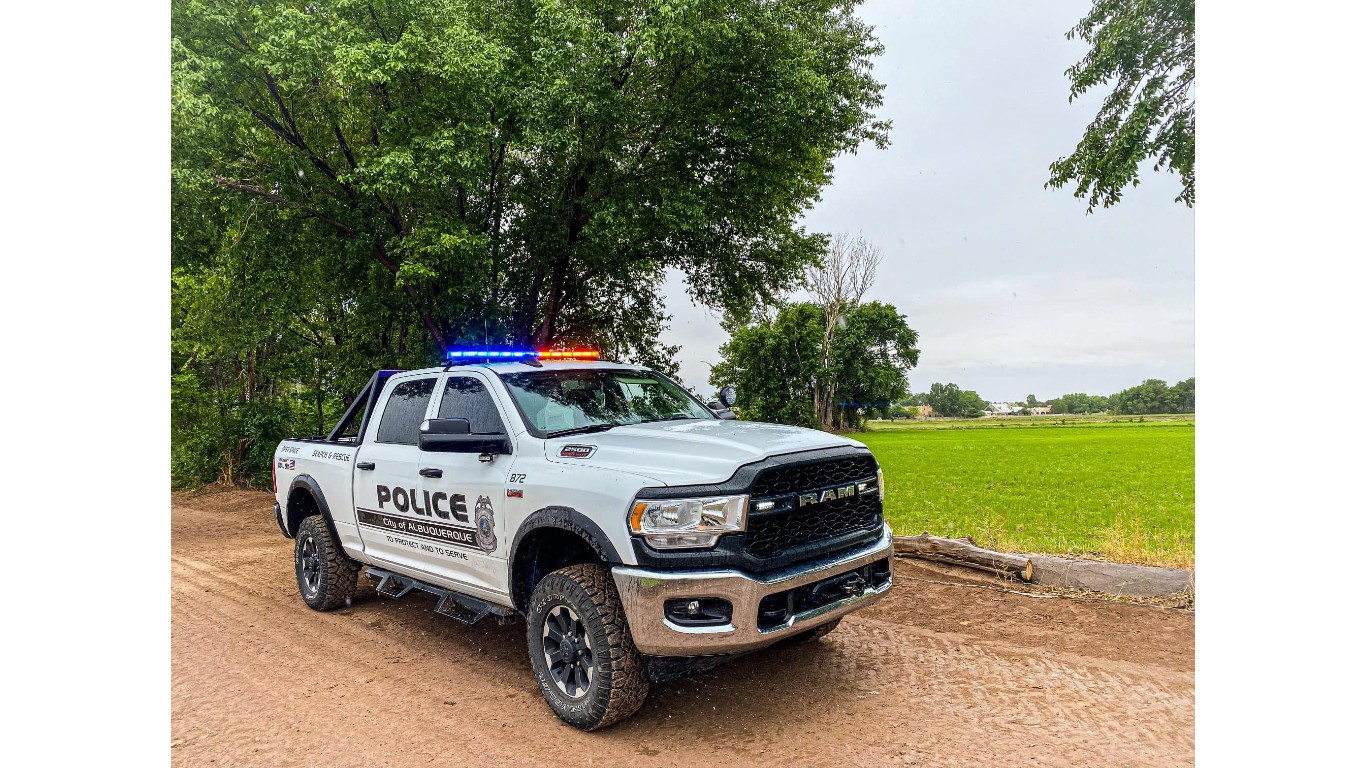
New Mexico: Albuquerque
> Total police personnel (2021): 1,474
> Police personnel per 1,000 population (2021): 2.6
> Total officers (2021): 940
> Total civilians (2021): 534
[in-text-ad]
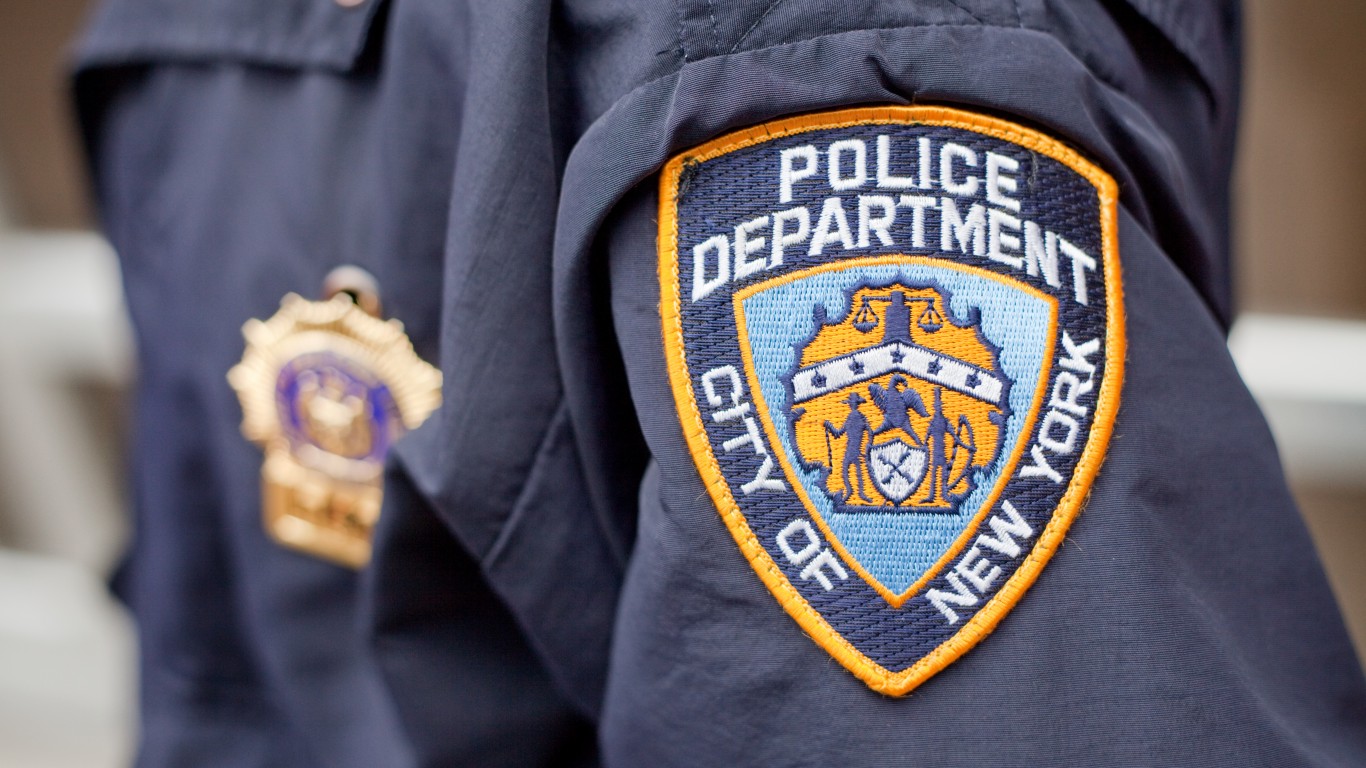
New York: New York
> Total police personnel (2021): 50,029
> Police personnel per 1,000 population (2021): 5.9
> Total officers (2021): 35047
> Total civilians (2021): 14,982
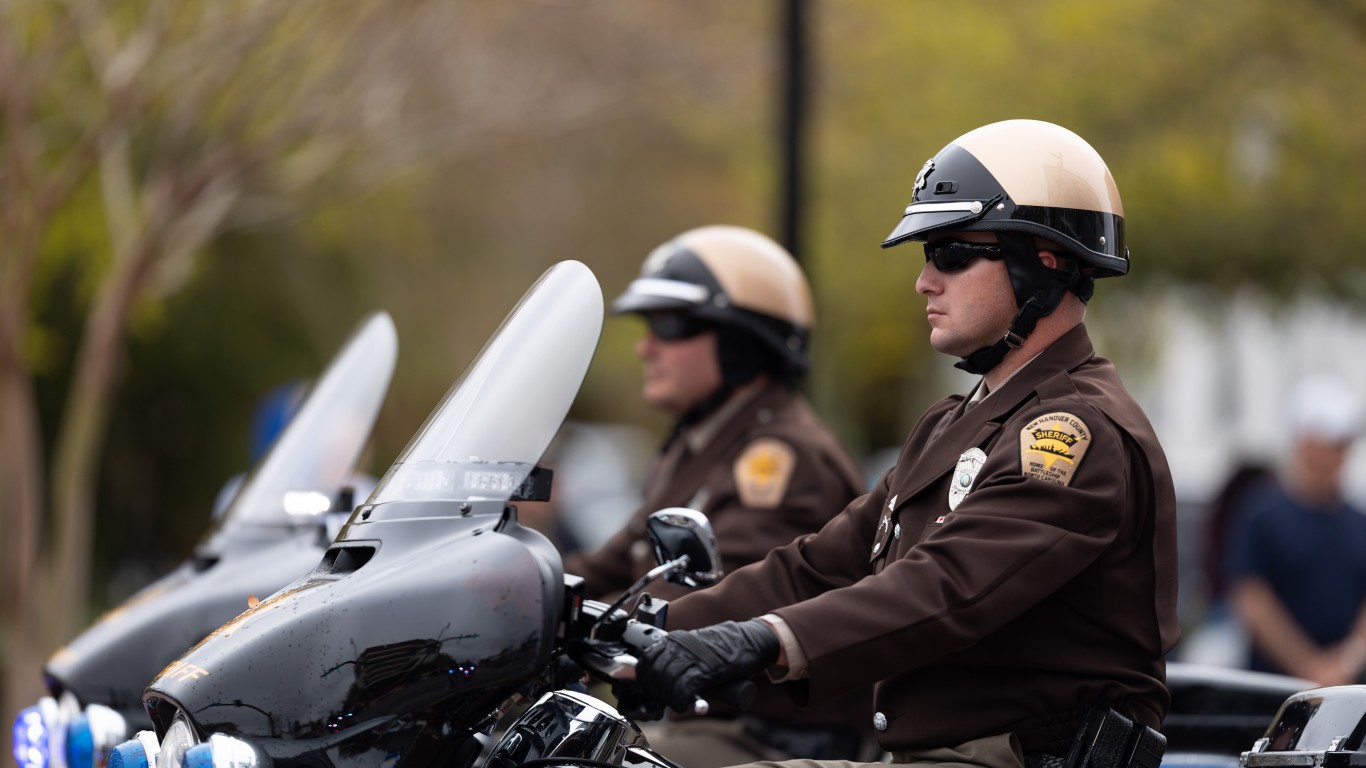
North Carolina: Charlotte-Mecklenburg
> Total police personnel (2021): 2,281
> Police personnel per 1,000 population (2021): 2.4
> Total officers (2021): 1734
> Total civilians (2021): 547
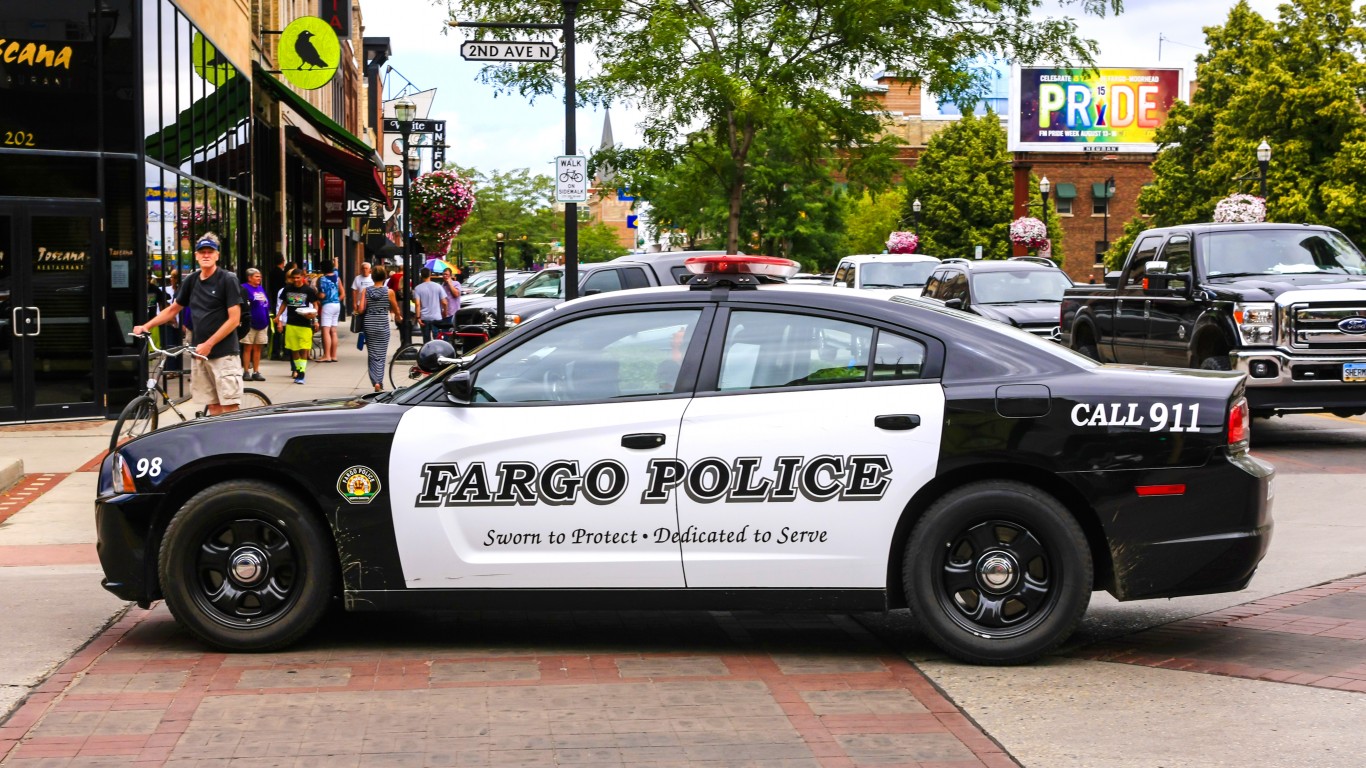
North Dakota: Fargo
> Total police personnel (2021): 199
> Police personnel per 1,000 population (2021): 1.6
> Total officers (2021): 180
> Total civilians (2021): 19
[in-text-ad-2]
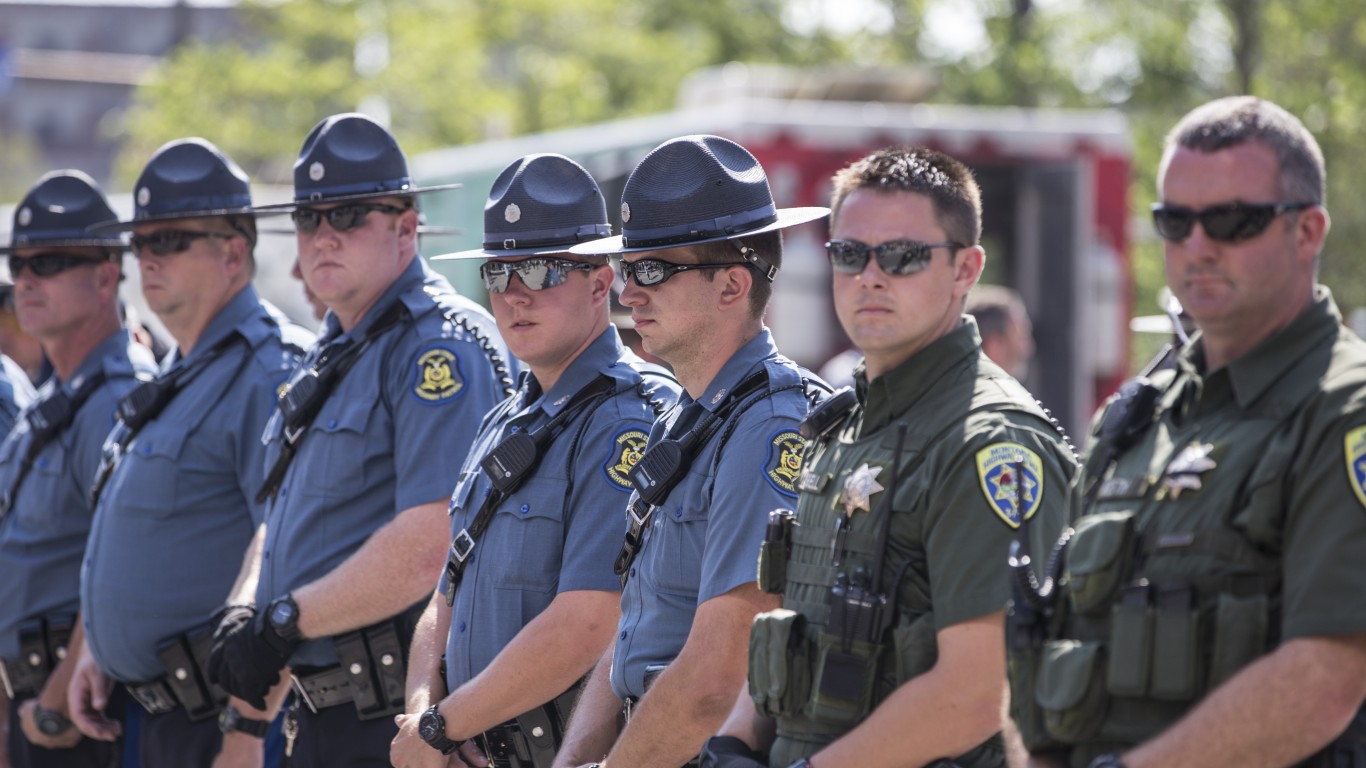
Ohio: Columbus
> Total police personnel (2021): 2,100
> Police personnel per 1,000 population (2021): N/A
> Total officers (2021): 1800
> Total civilians (2021): 300
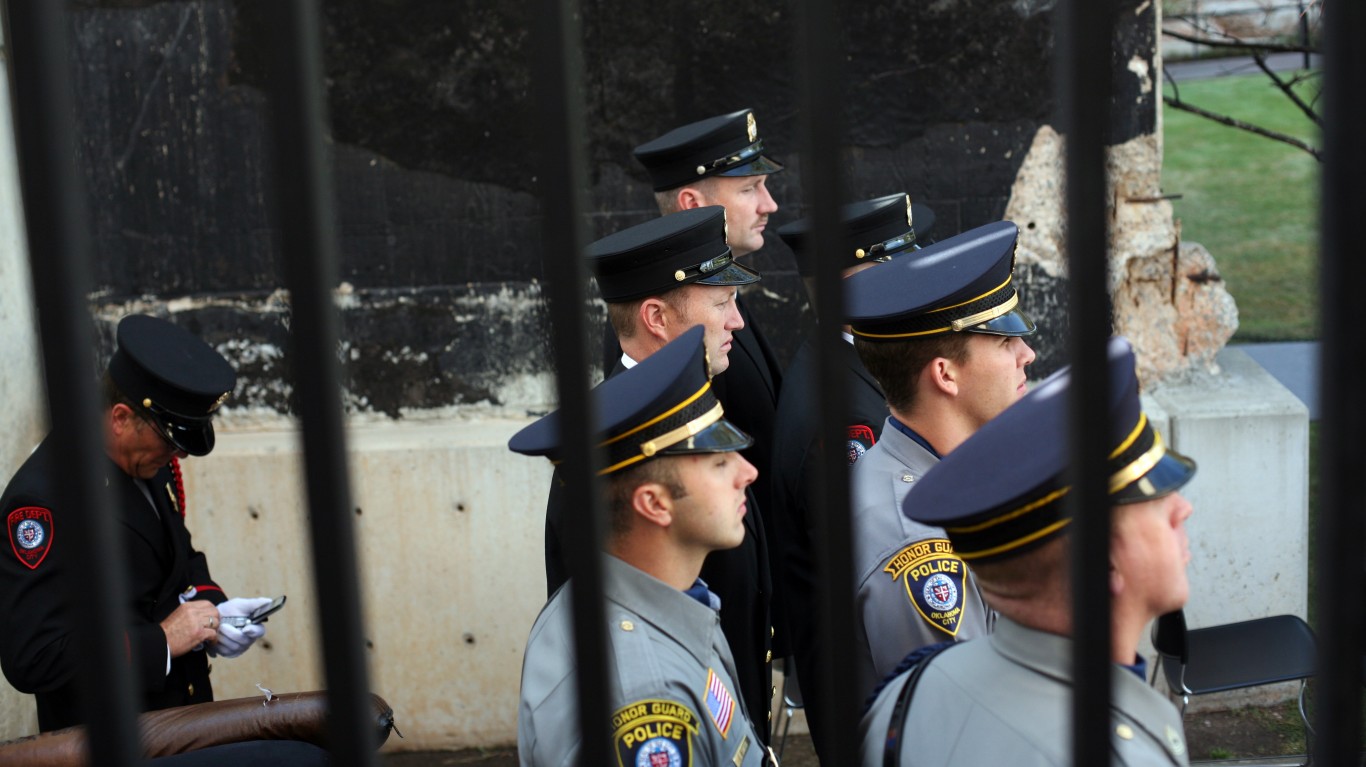
Oklahoma: Oklahoma City
> Total police personnel (2021): 1,378
> Police personnel per 1,000 population (2021): 2.0
> Total officers (2021): 1105
> Total civilians (2021): 273
[in-text-ad]
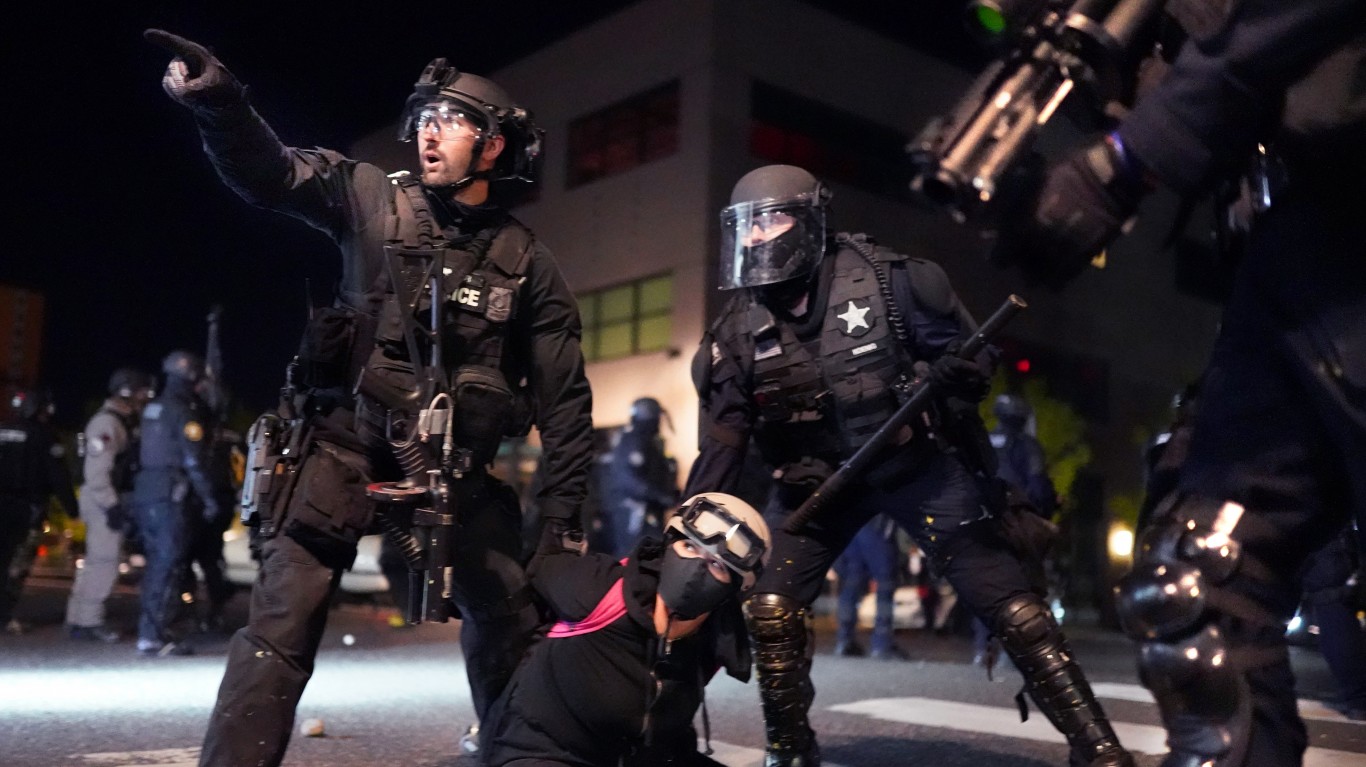
Oregon: Portland
> Total police personnel (2021): 1,040
> Police personnel per 1,000 population (2021): 1.6
> Total officers (2021): 791
> Total civilians (2021): 249
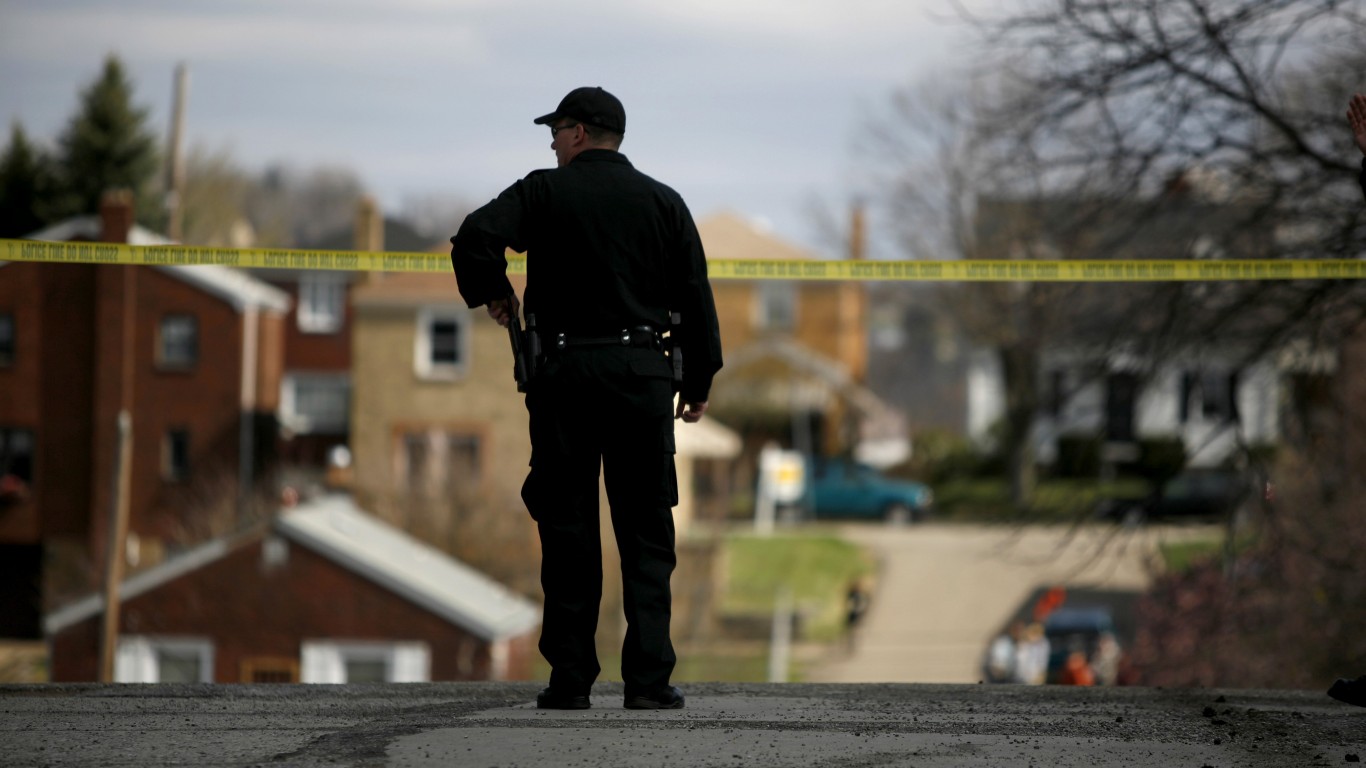
Pennsylvania: Philadelphia
> Total police personnel (2021): 7,300
> Police personnel per 1,000 population (2021): N/A
> Total officers (2021): 6500
> Total civilians (2021): 800

Rhode Island: Providence
> Total police personnel (2021): 533
> Police personnel per 1,000 population (2021): 2.9
> Total officers (2021): 449
> Total civilians (2021): 84
[in-text-ad-2]
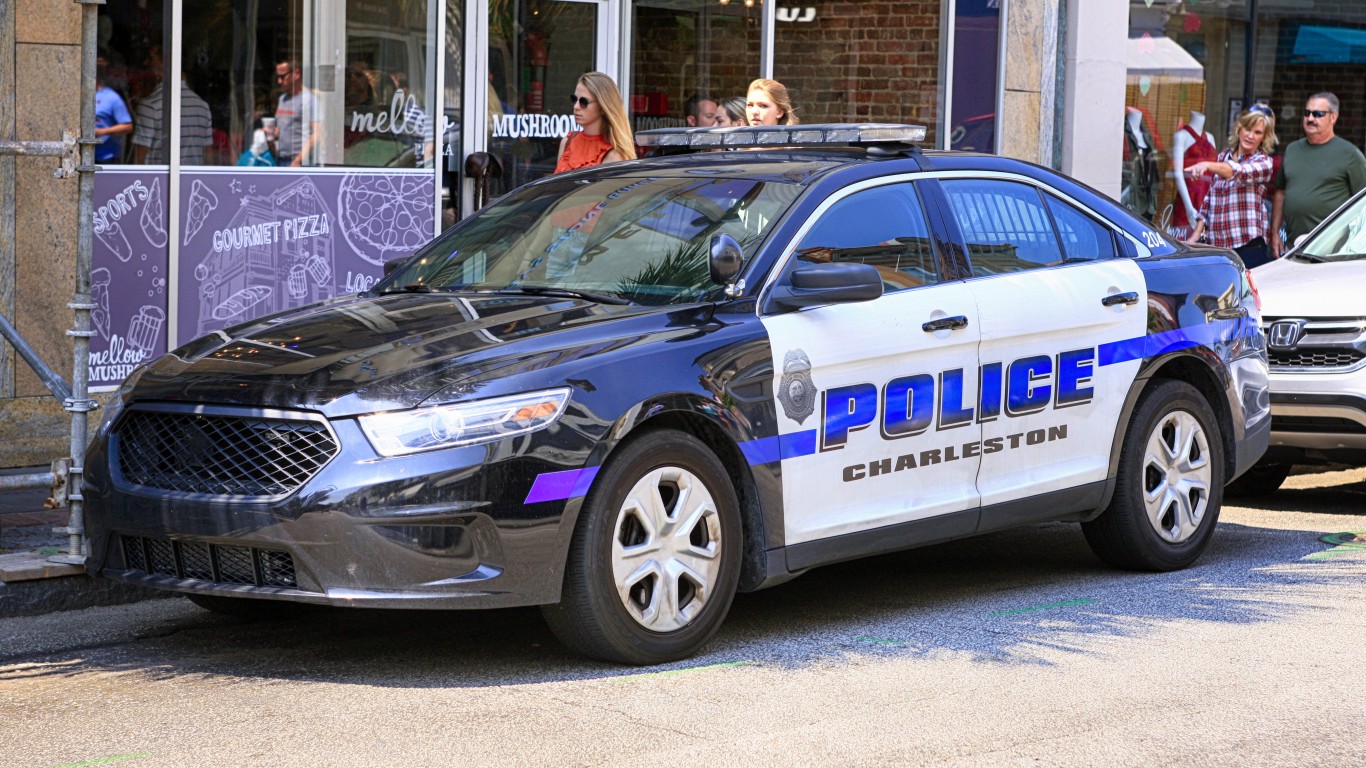
South Carolina: Charleston
> Total police personnel (2021): 651
> Police personnel per 1,000 population (2021): 8.0
> Total officers (2021): 271
> Total civilians (2021): 380
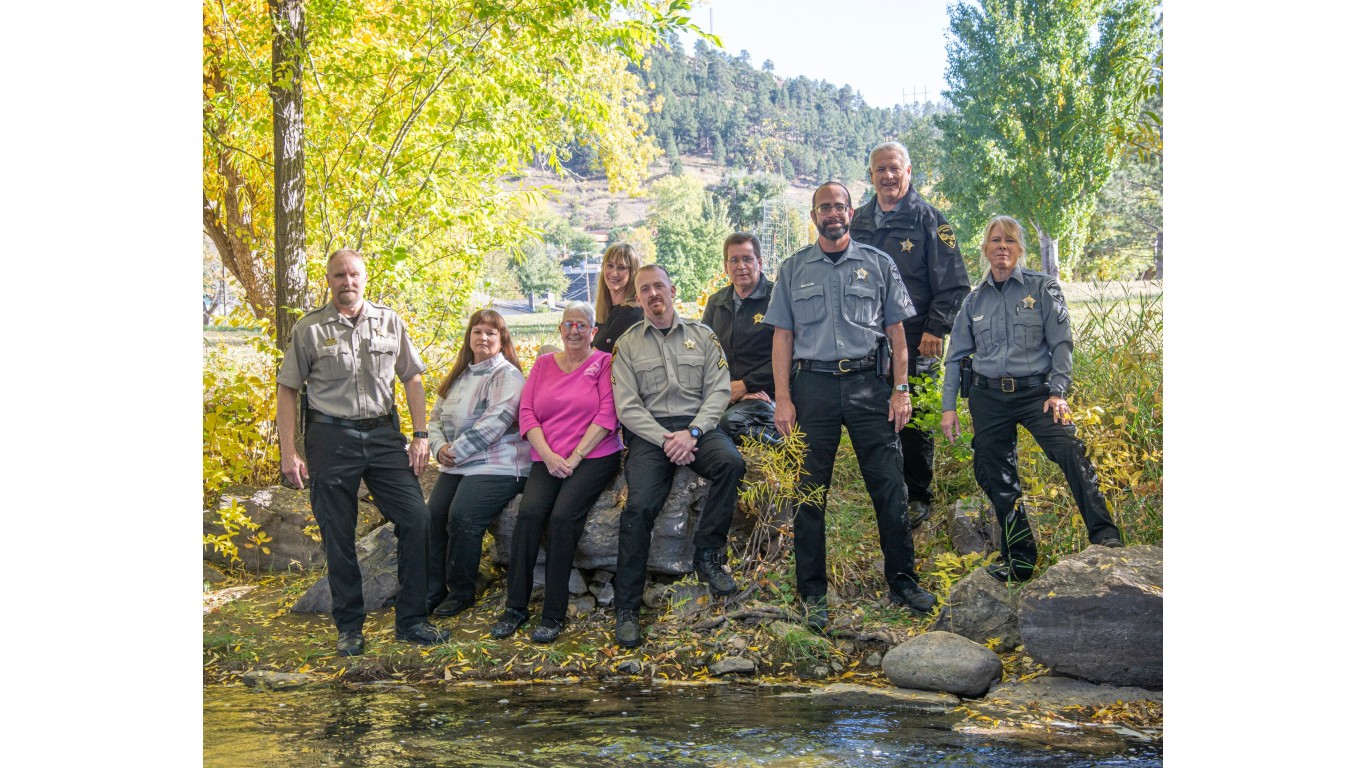
South Dakota: Pennington
> Total police personnel (2021): 431
> Police personnel per 1,000 population (2021): 14.6
> Total officers (2021): 101
> Total civilians (2021): 330
[in-text-ad]
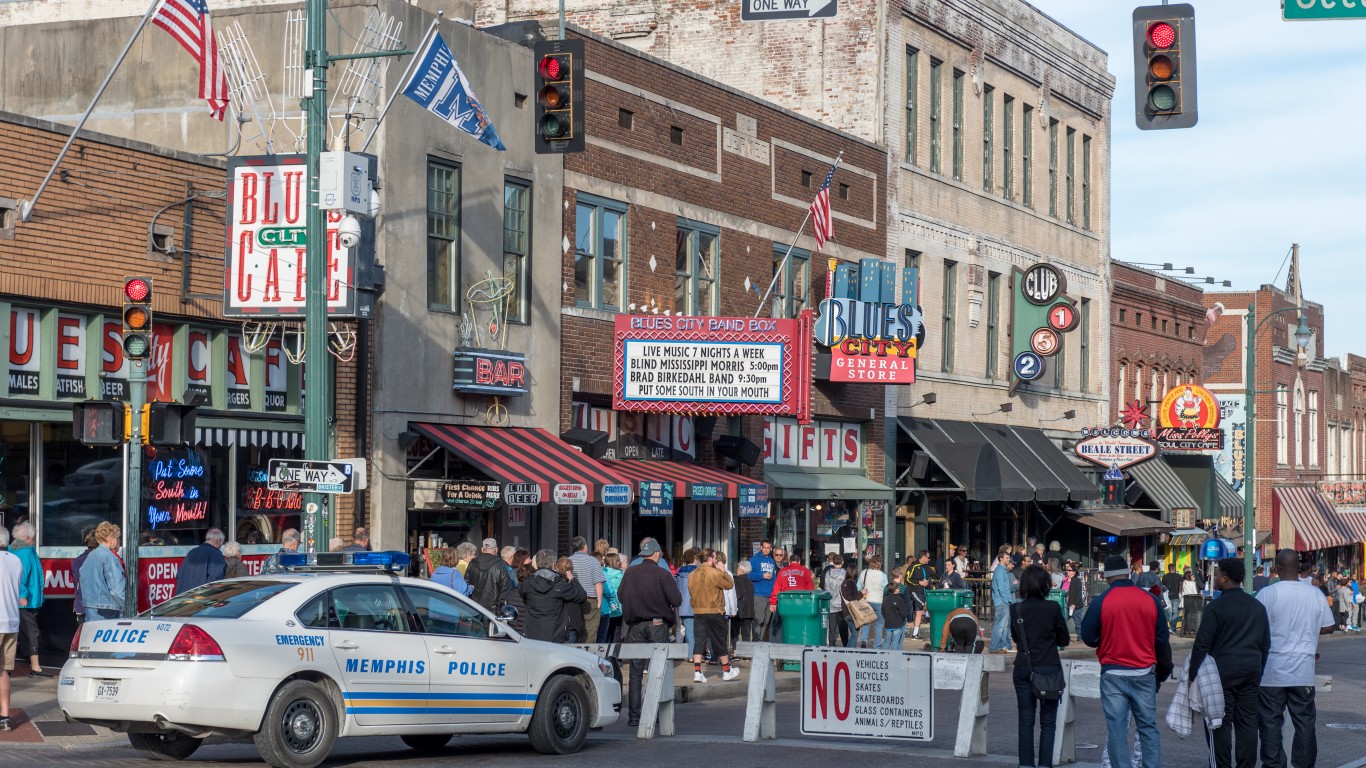
Tennessee: Memphis
> Total police personnel (2021): 2,446
> Police personnel per 1,000 population (2021): 3.8
> Total officers (2021): 2027
> Total civilians (2021): 419
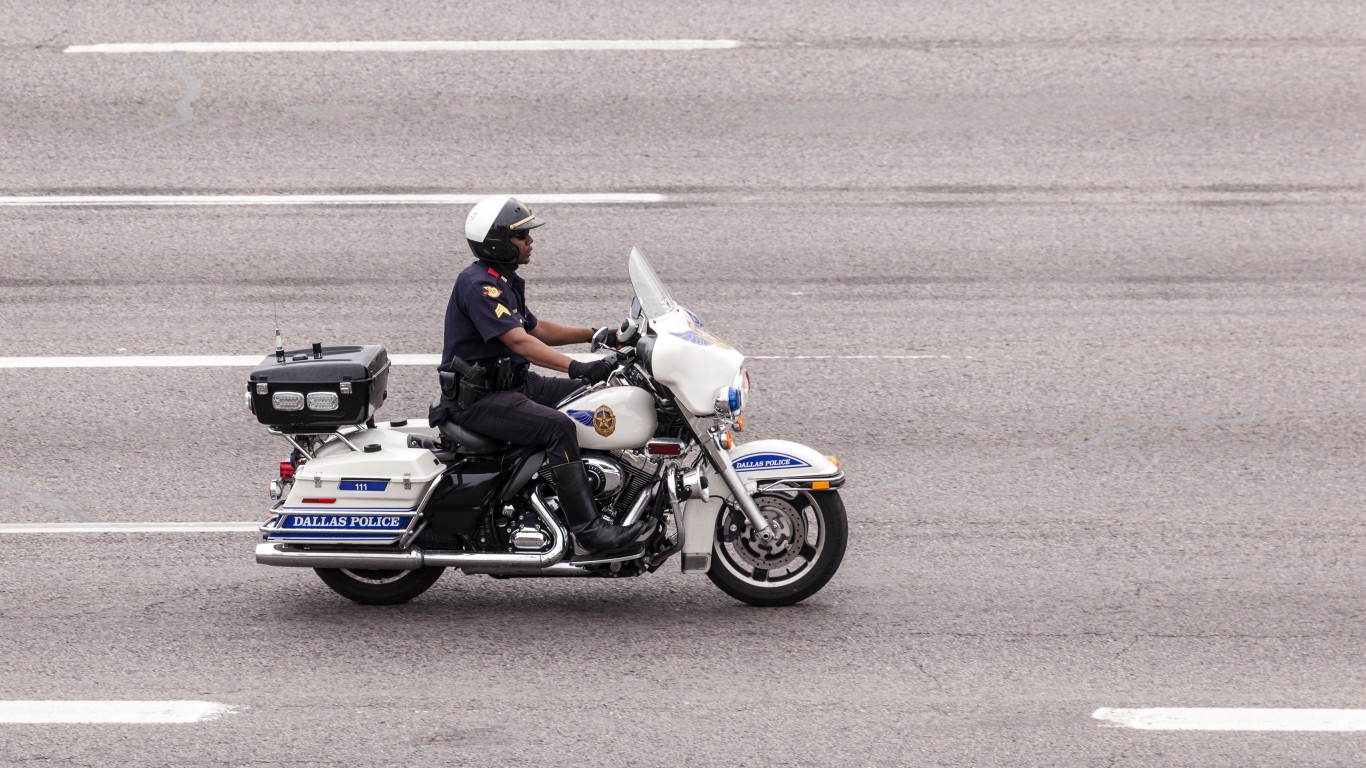
Texas: Houston
> Total police personnel (2021): 6,249
> Police personnel per 1,000 population (2021): 2.7
> Total officers (2021): 5250
> Total civilians (2021): 999
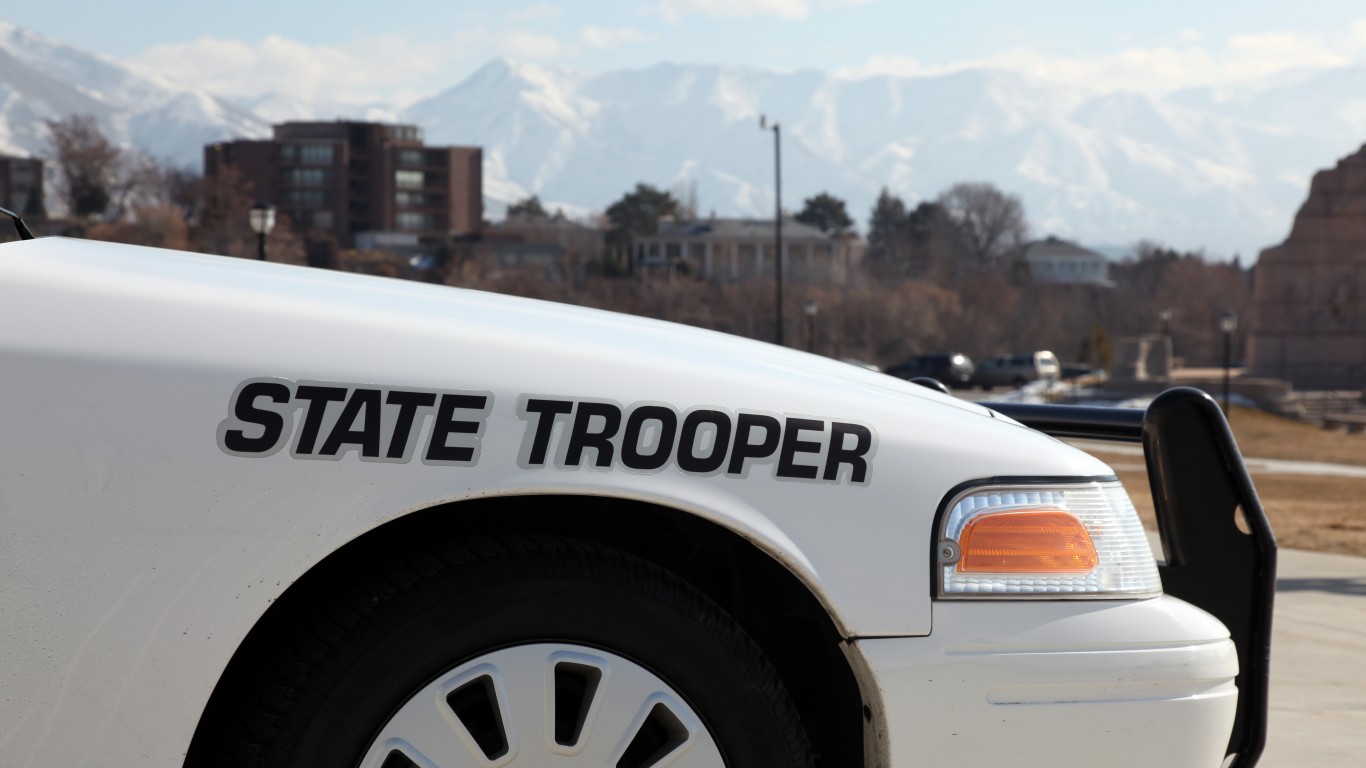
Utah: Salt Lake City
> Total police personnel (2021): 627
> Police personnel per 1,000 population (2021): 3.0
> Total officers (2021): 490
> Total civilians (2021): 137
[in-text-ad-2]
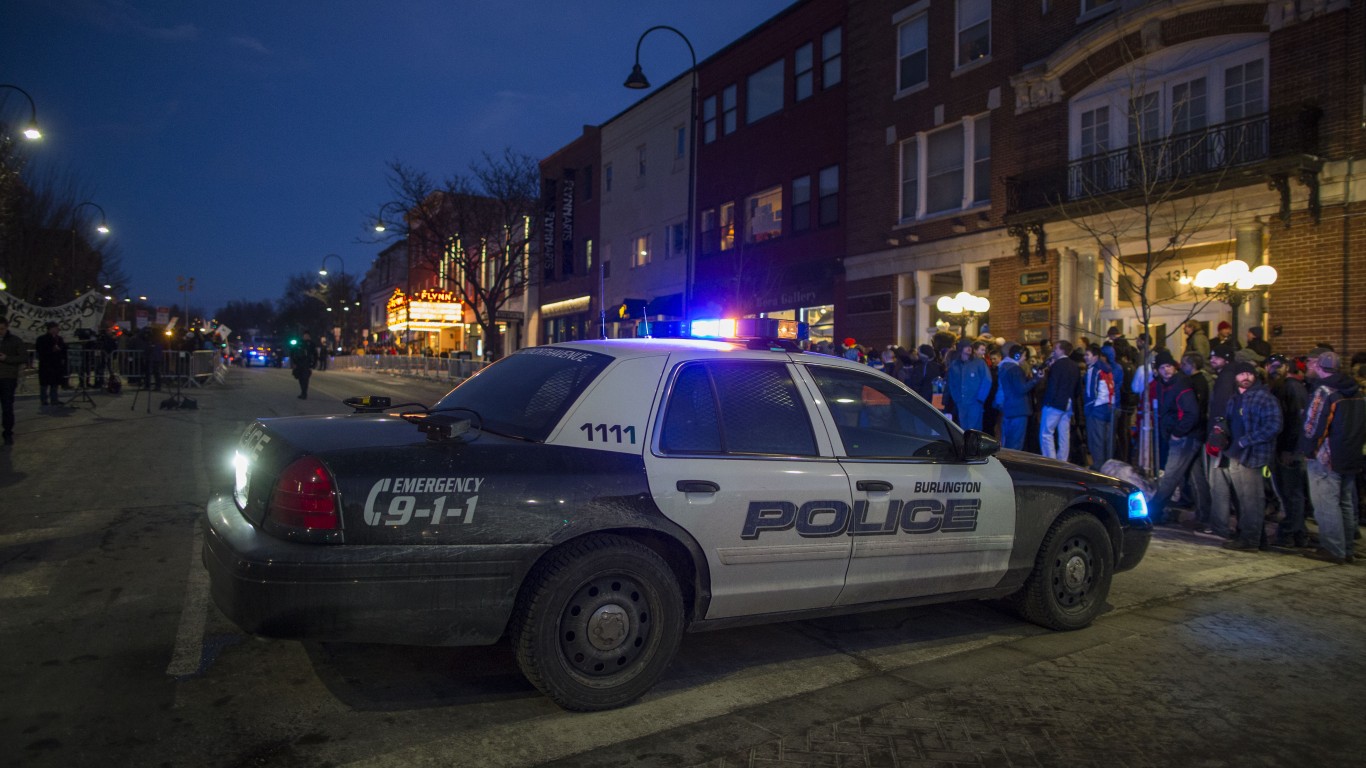
Vermont: Burlington
> Total police personnel (2021): 99
> Police personnel per 1,000 population (2021): 2.3
> Total officers (2021): 69
> Total civilians (2021): 30
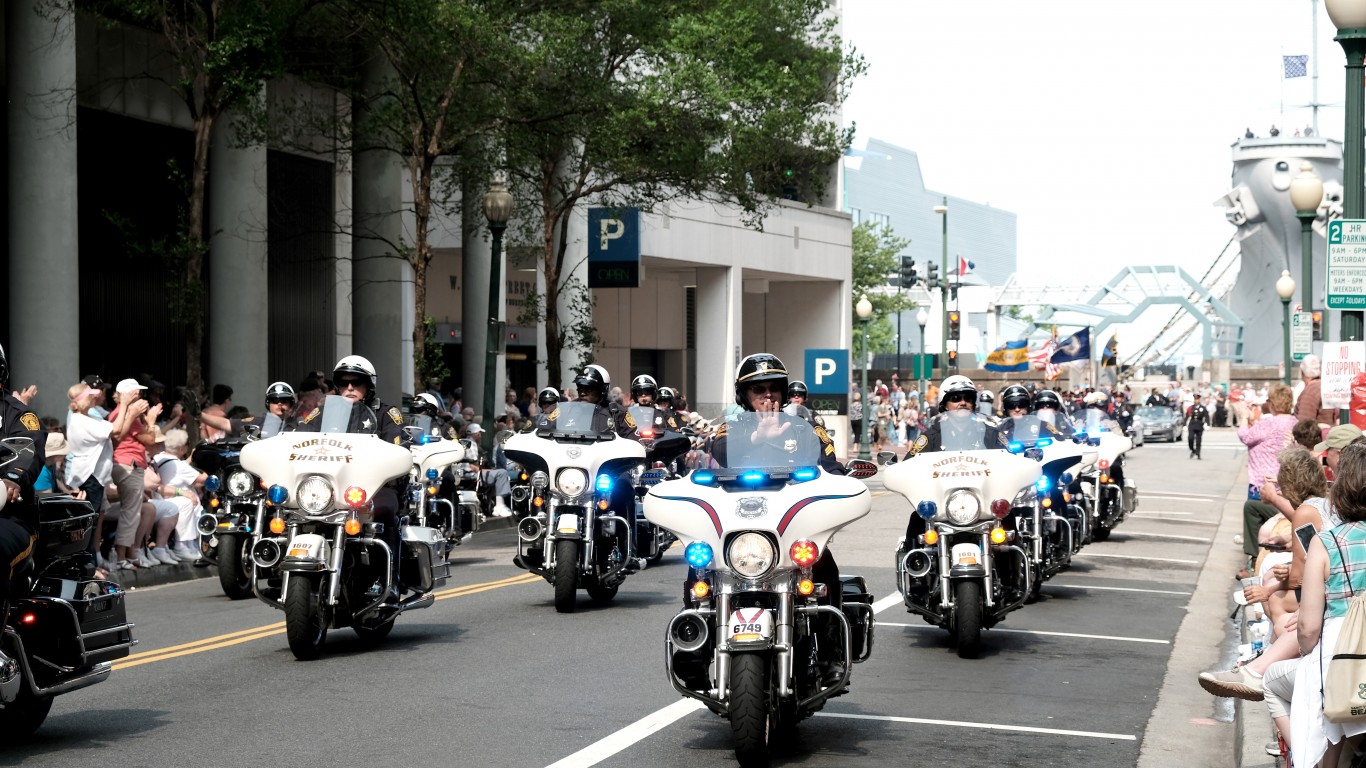
Virginia: Fairfax County Police Department
> Total police personnel (2021): 1,768
> Police personnel per 1,000 population (2021): 1.6
> Total officers (2021): 1430
> Total civilians (2021): 338
[in-text-ad]
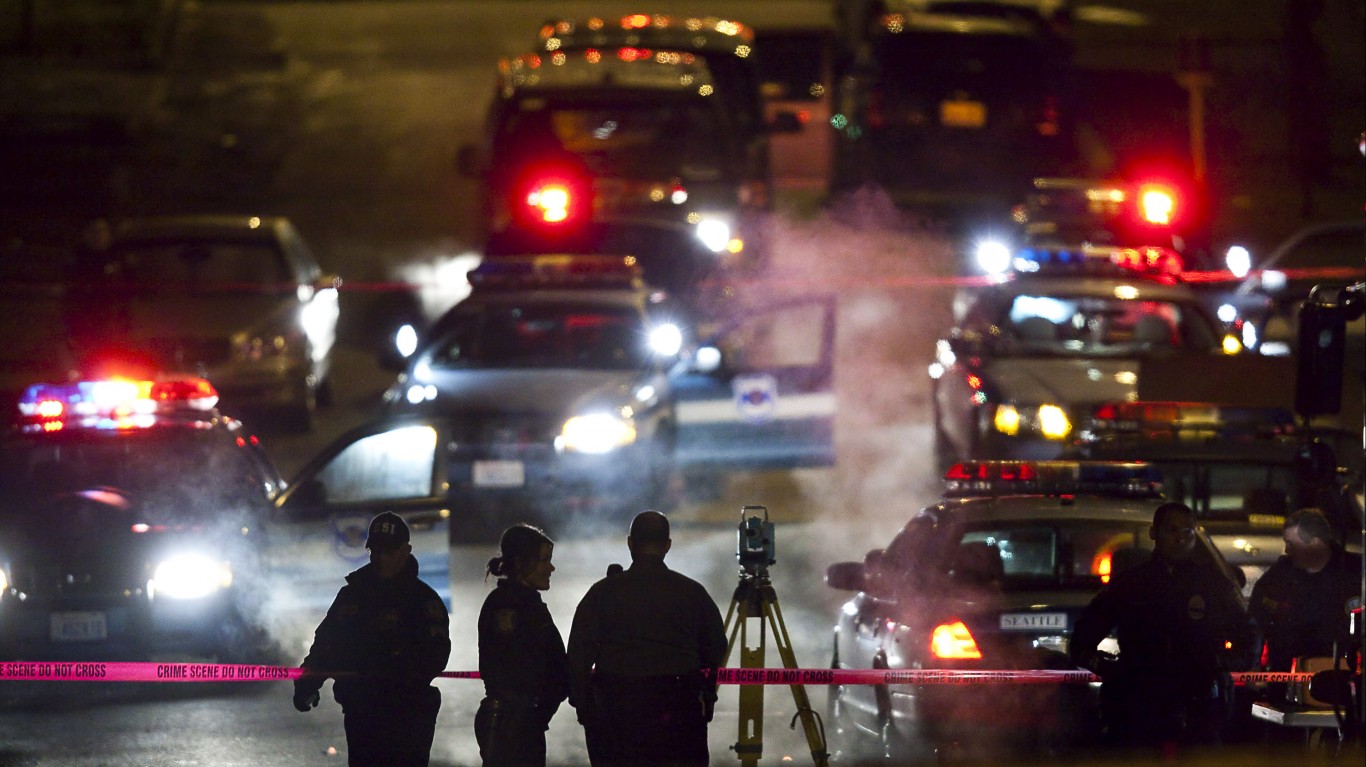
Washington: Seattle
> Total police personnel (2021): 1,597
> Police personnel per 1,000 population (2021): 2.0
> Total officers (2021): 1178
> Total civilians (2021): 419
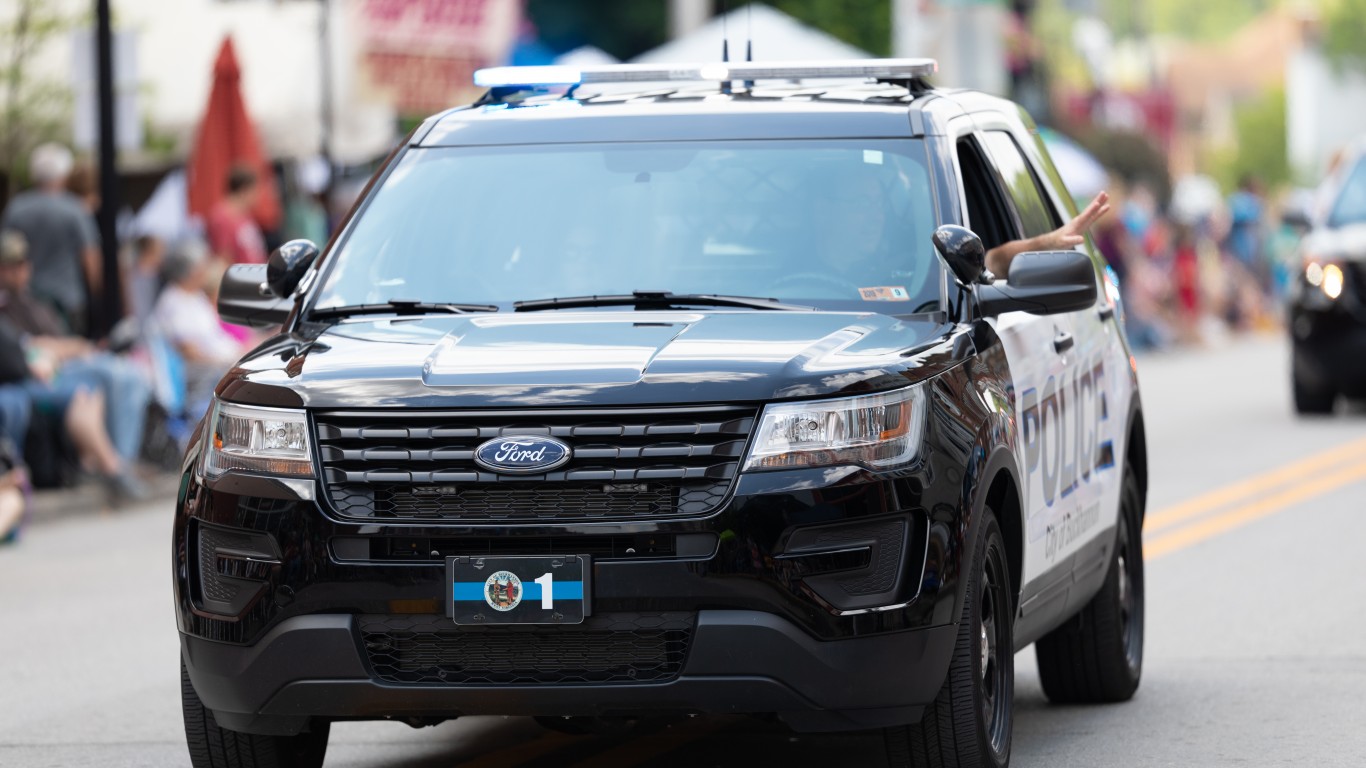
West Virginia: Charleston
> Total police personnel (2021): 180
> Police personnel per 1,000 population (2021): 4.0
> Total officers (2021): 157
> Total civilians (2021): 23
Wisconsin: Milwaukee
> Total police personnel (2021): 2,015
> Police personnel per 1,000 population (2021): 3.4
> Total officers (2021): 1654
> Total civilians (2021): 361
[in-text-ad-2]
Wyoming: Laramie
> Total police personnel (2021): 175
> Police personnel per 1,000 population (2021): 5.1
> Total officers (2021): 43
> Total civilians (2021): 132
Travel Cards Are Getting Too Good To Ignore (sponsored)
Credit card companies are pulling out all the stops, with the issuers are offering insane travel rewards and perks.
We’re talking huge sign-up bonuses, points on every purchase, and benefits like lounge access, travel credits, and free hotel nights. For travelers, these rewards can add up to thousands of dollars in flights, upgrades, and luxury experiences every year.
It’s like getting paid to travel — and it’s available to qualified borrowers who know where to look.
We’ve rounded up some of the best travel credit cards on the market. Click here to see the list. Don’t miss these offers — they won’t be this good forever.
Thank you for reading! Have some feedback for us?
Contact the 24/7 Wall St. editorial team.
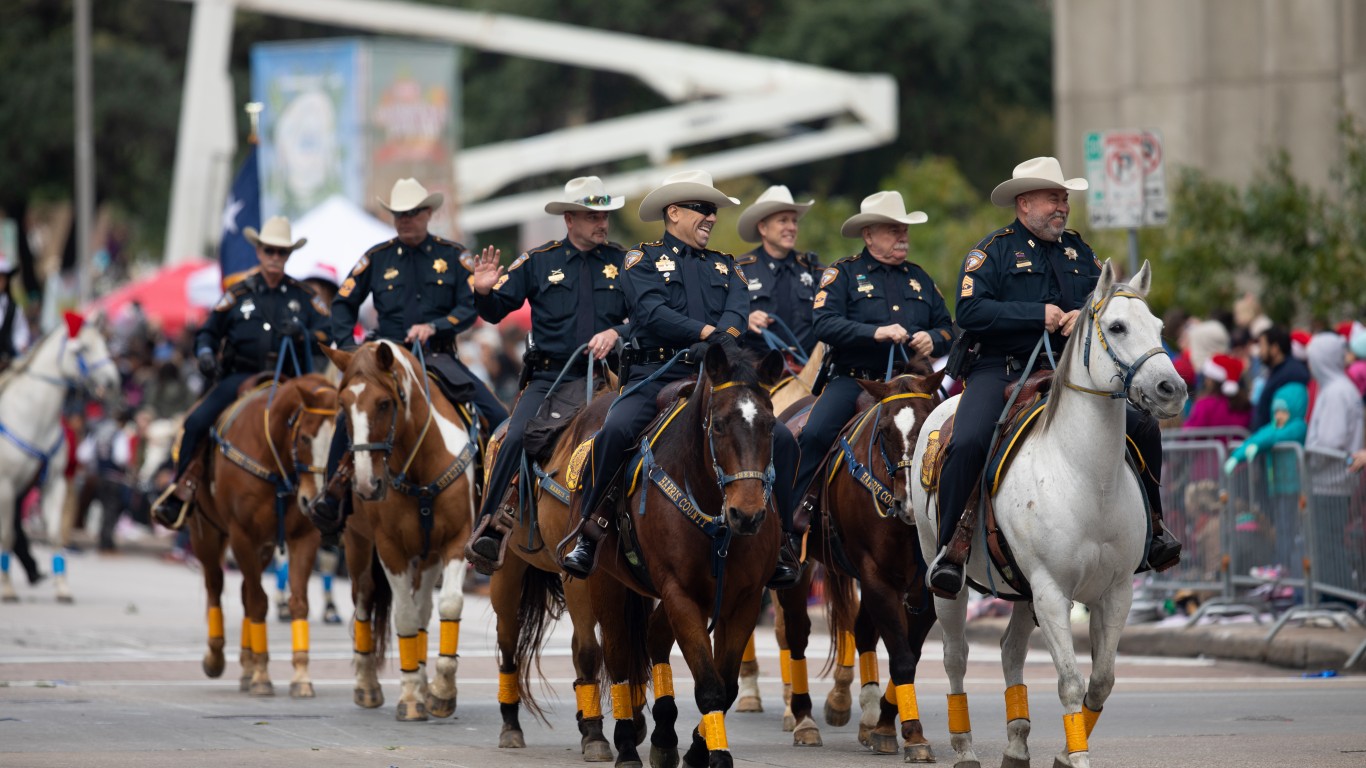 24/7 Wall St.
24/7 Wall St.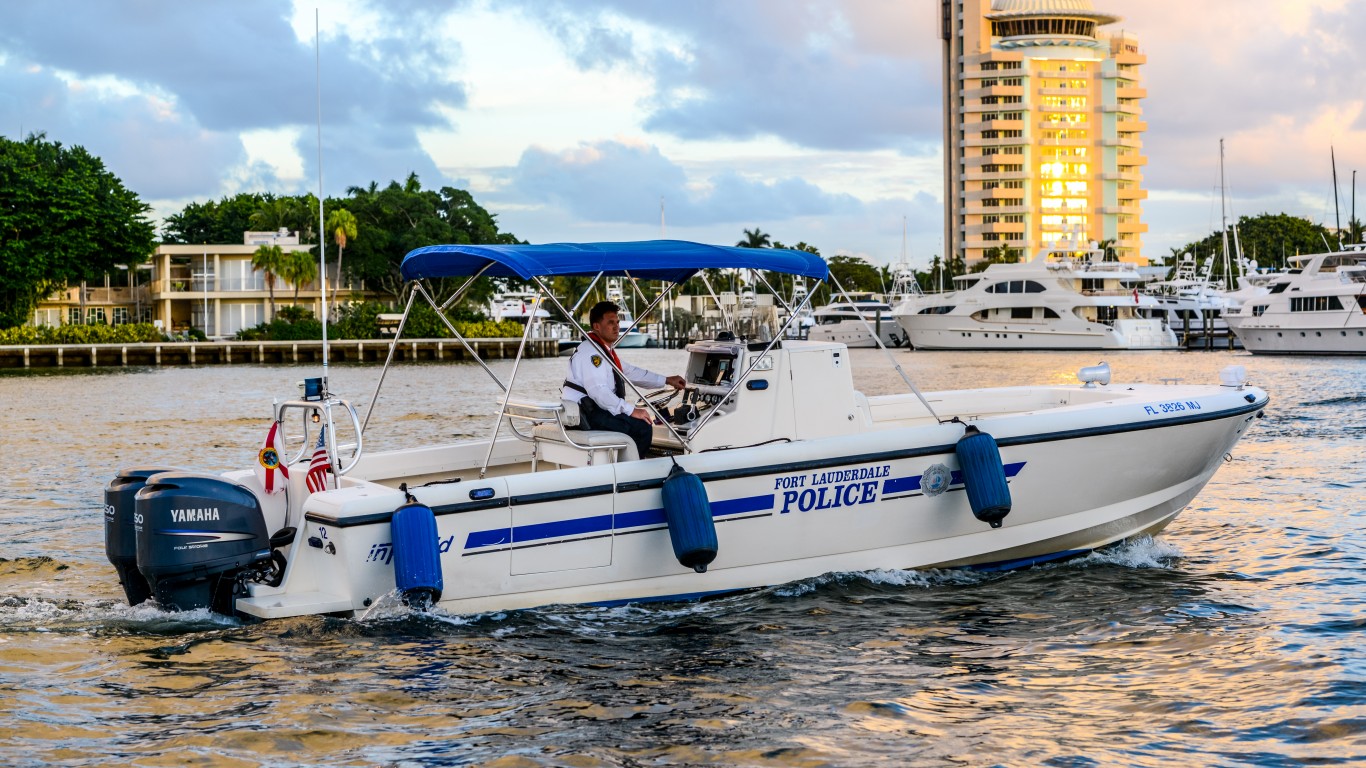 24/7 Wall St.
24/7 Wall St.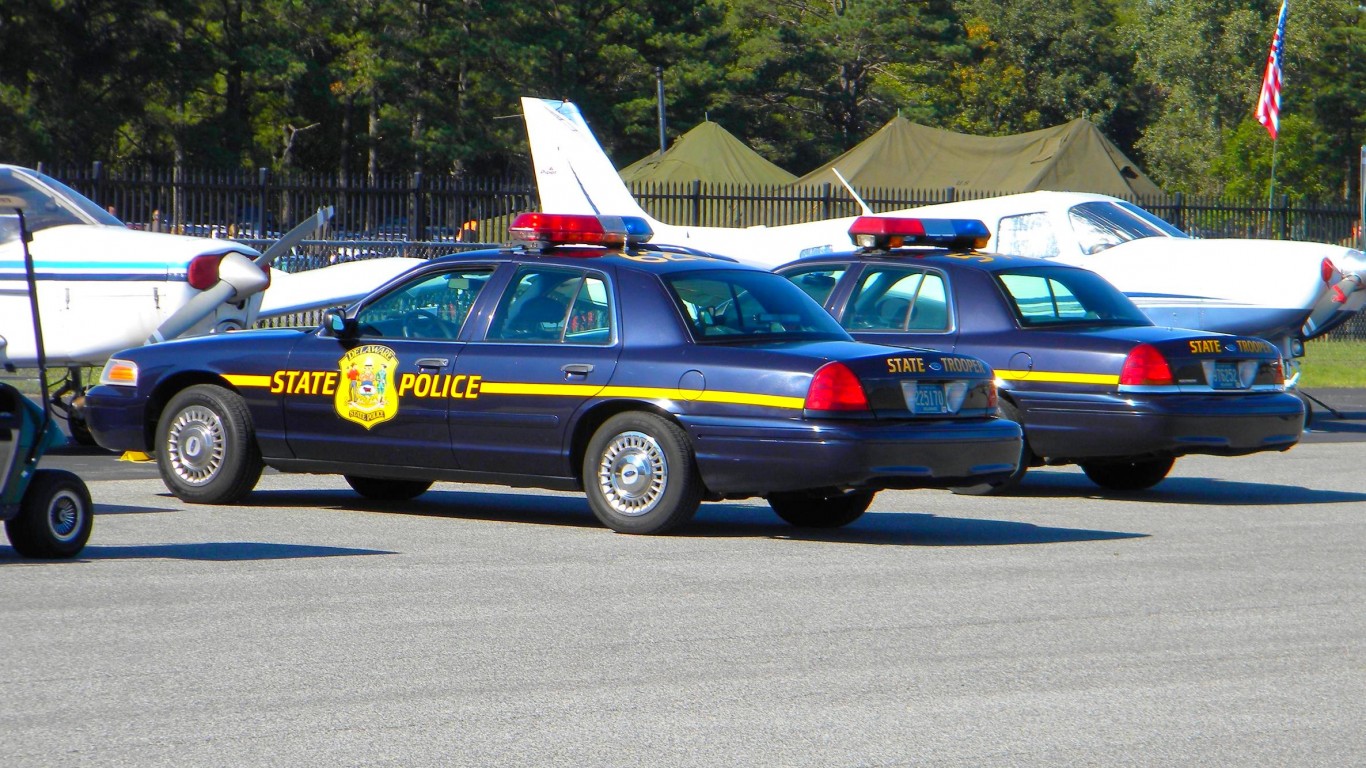
 24/7 Wall St.
24/7 Wall St.